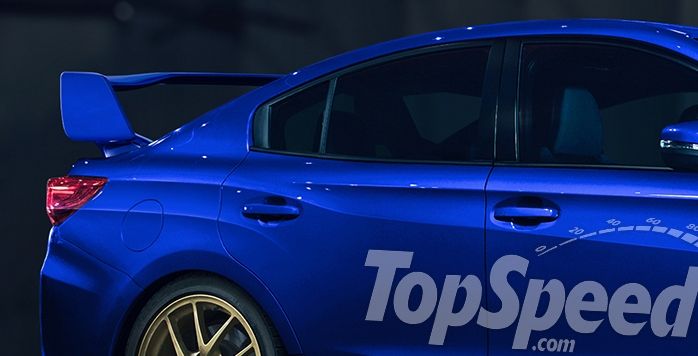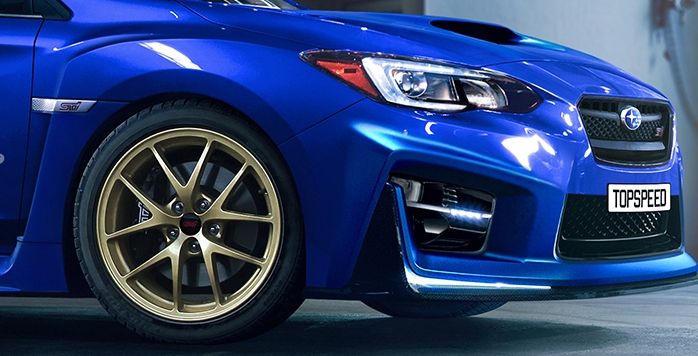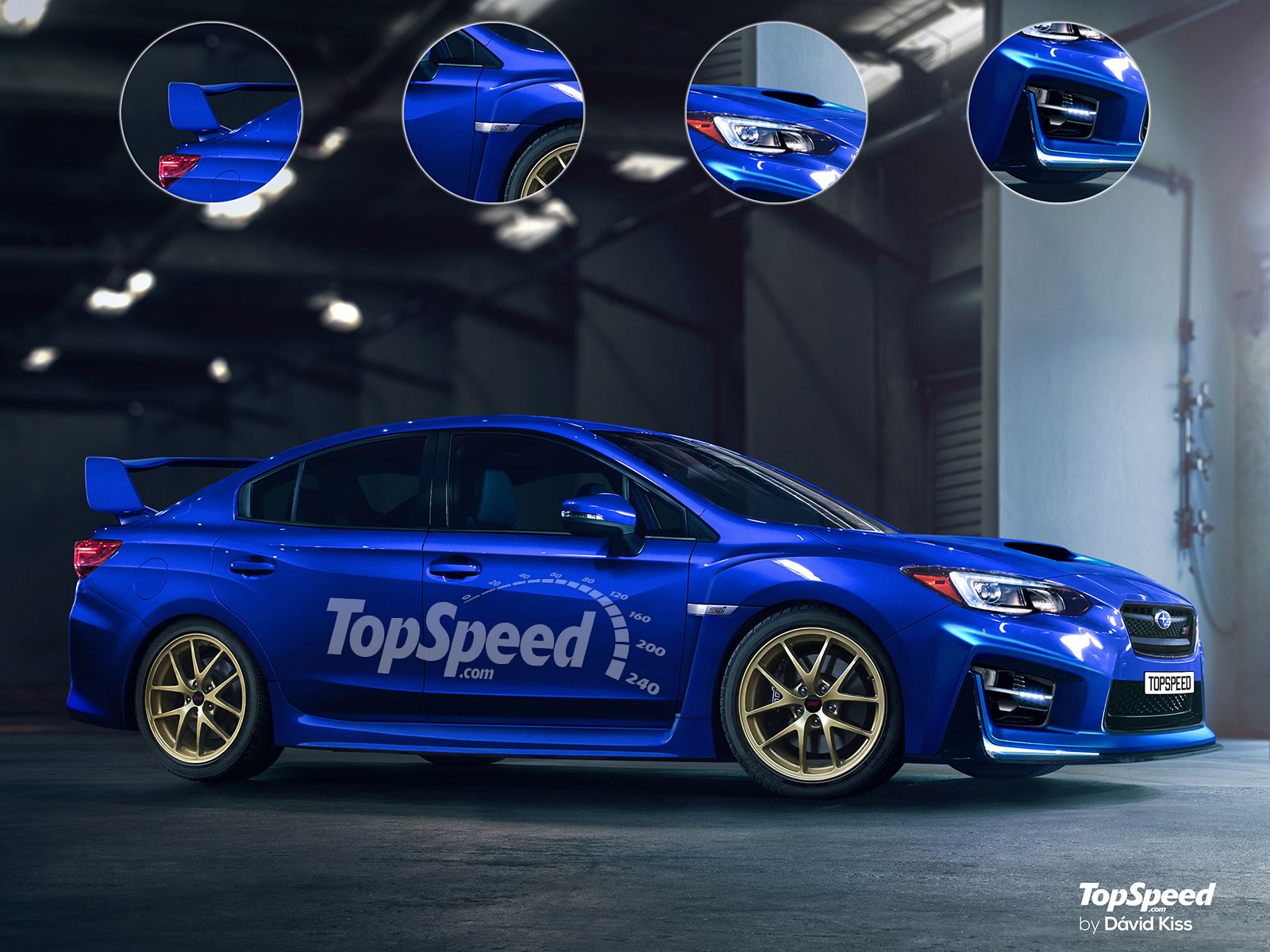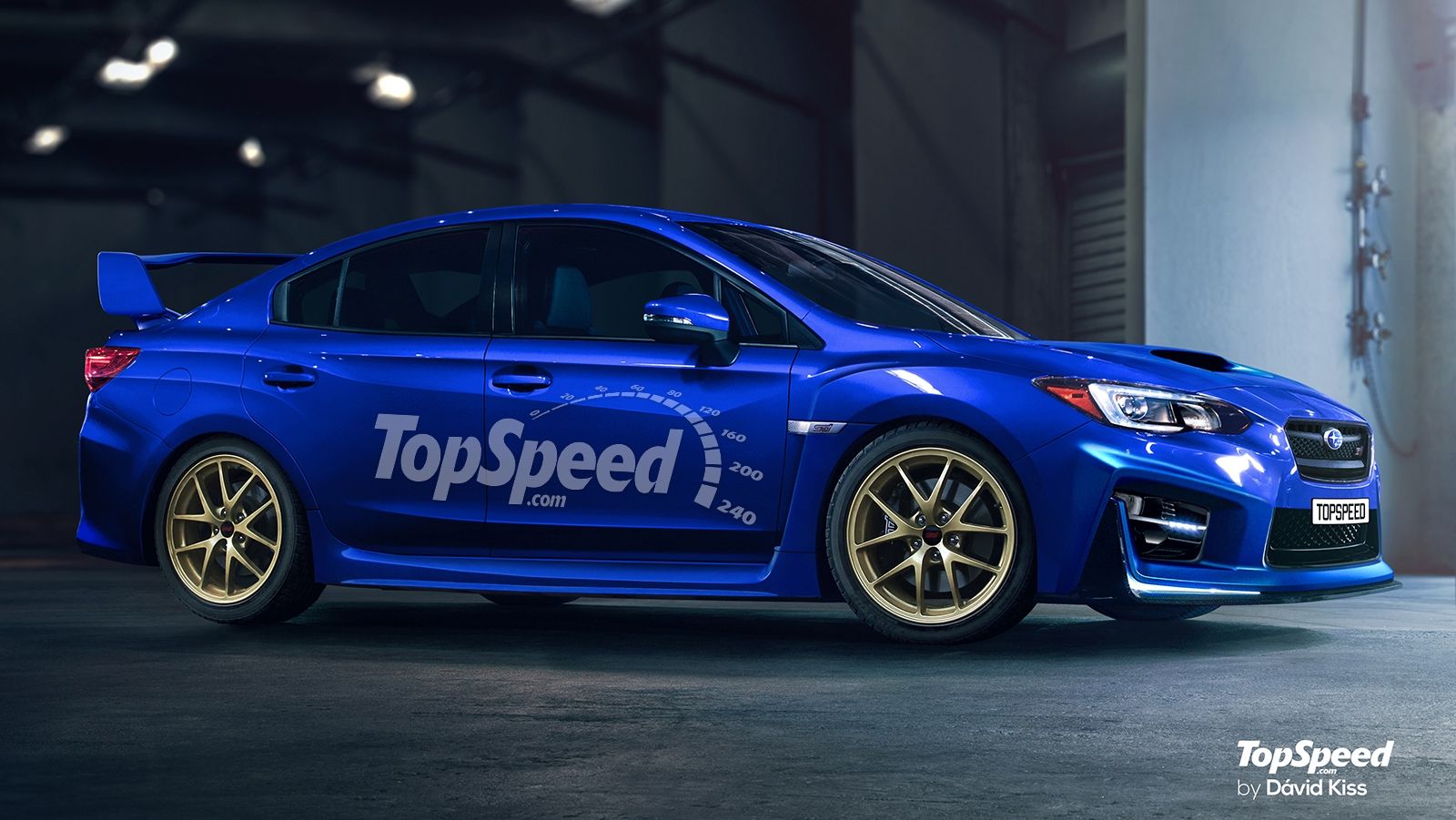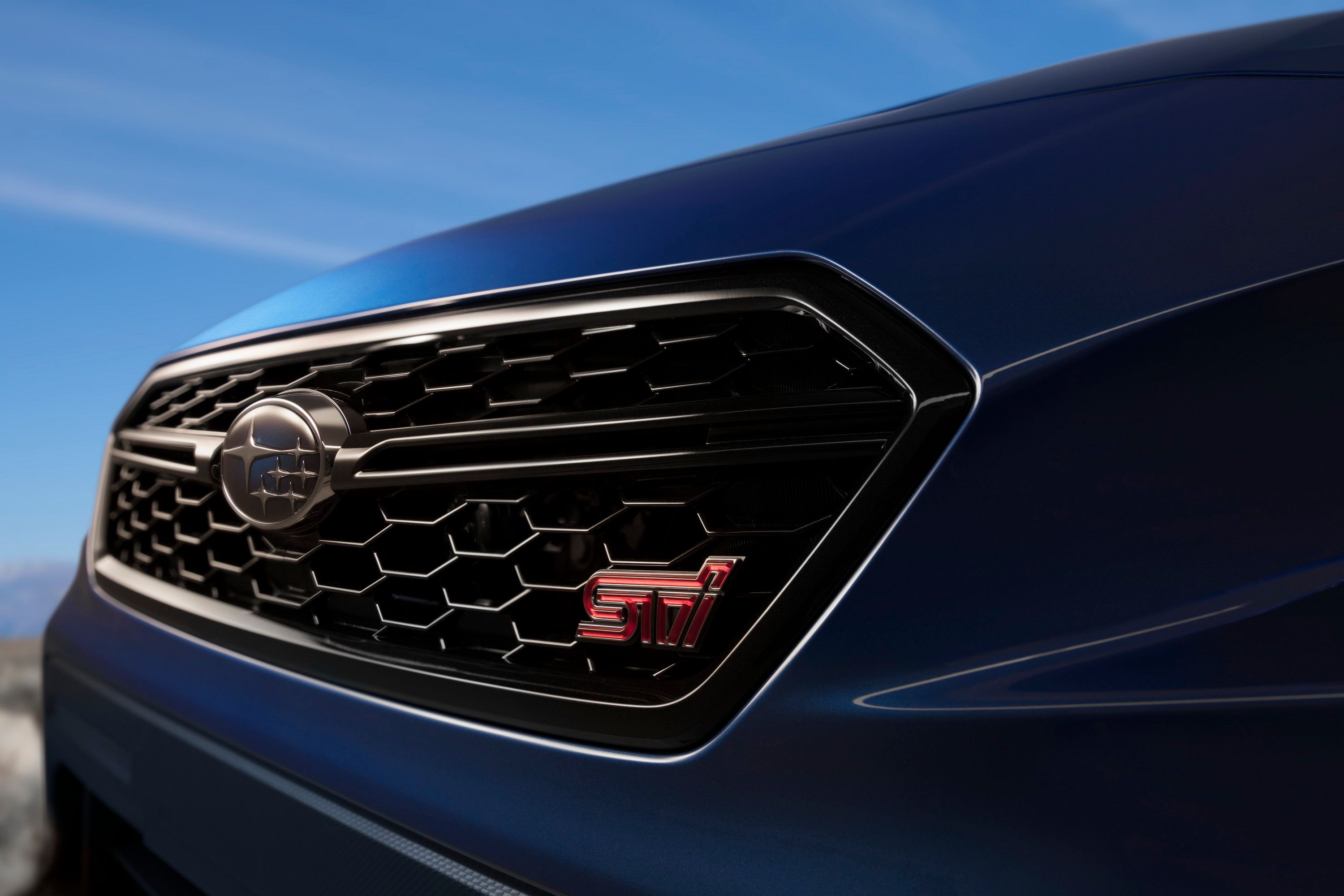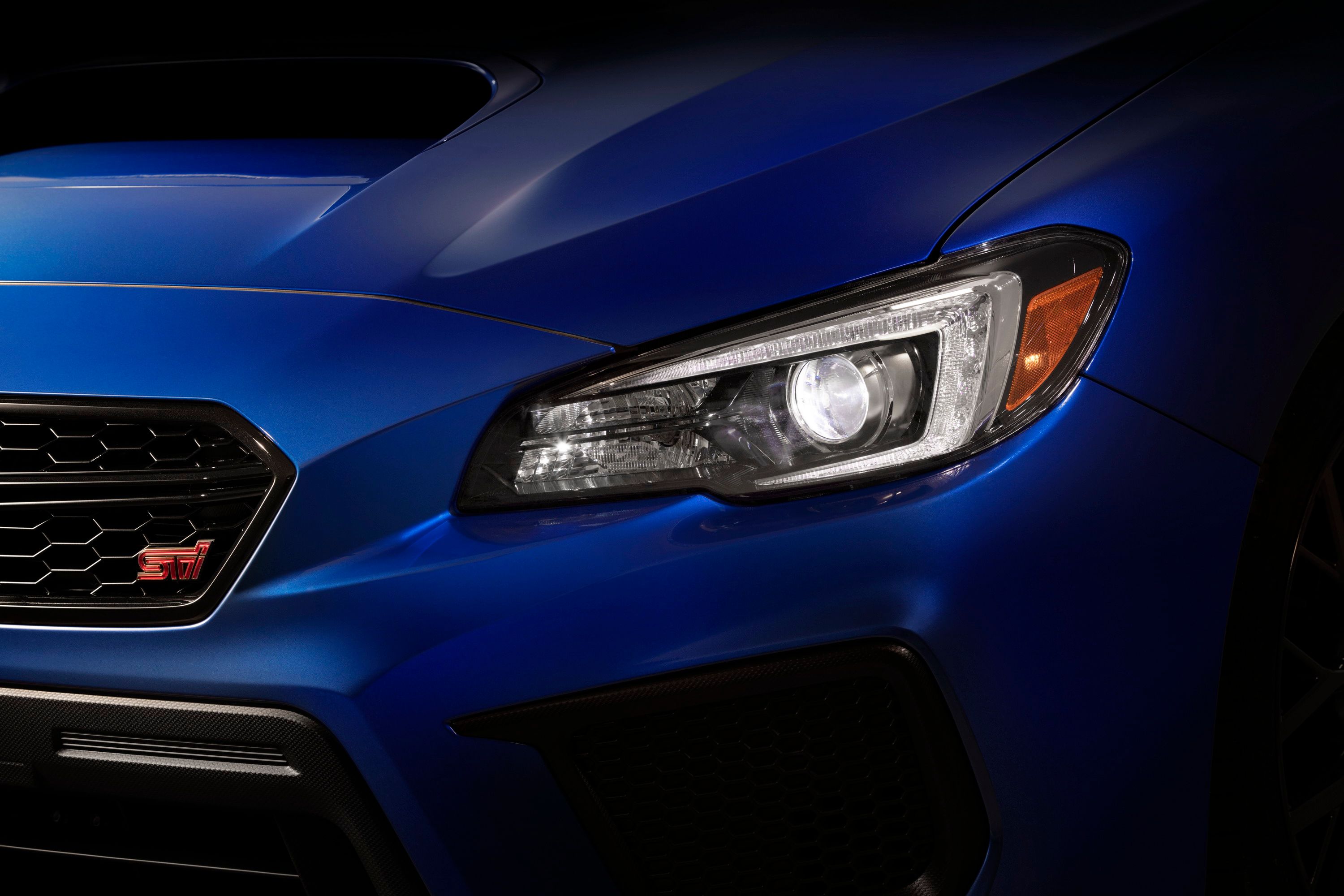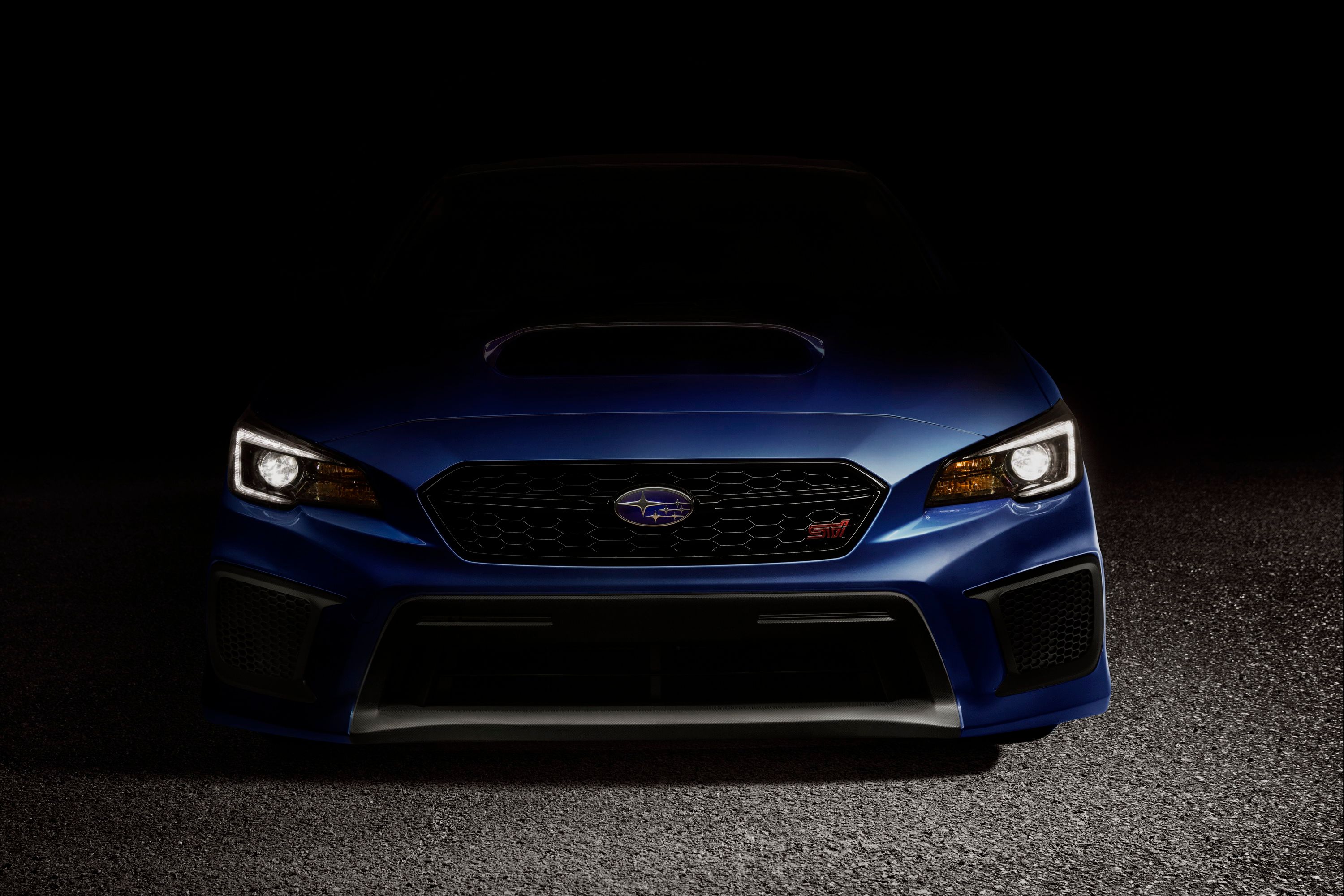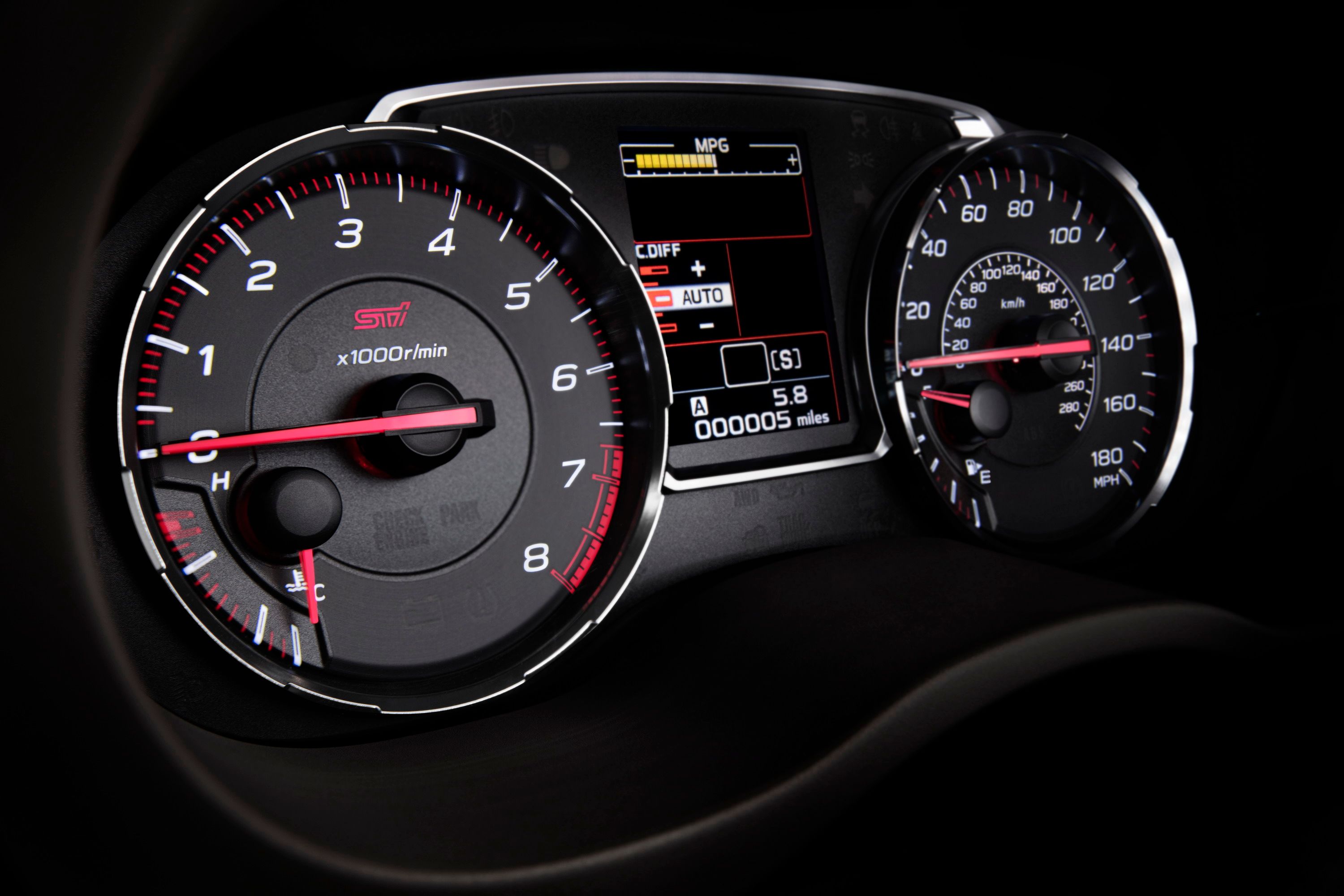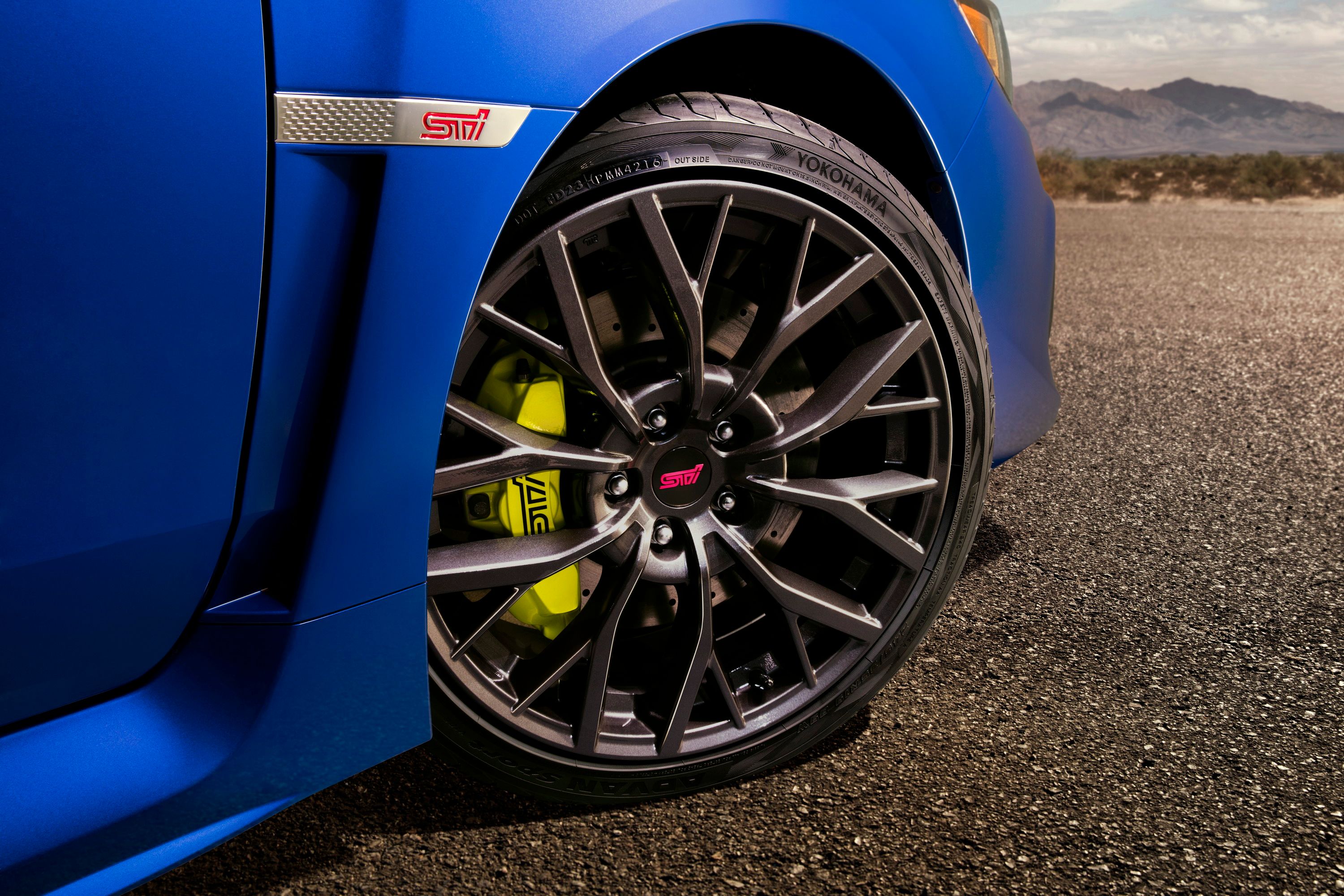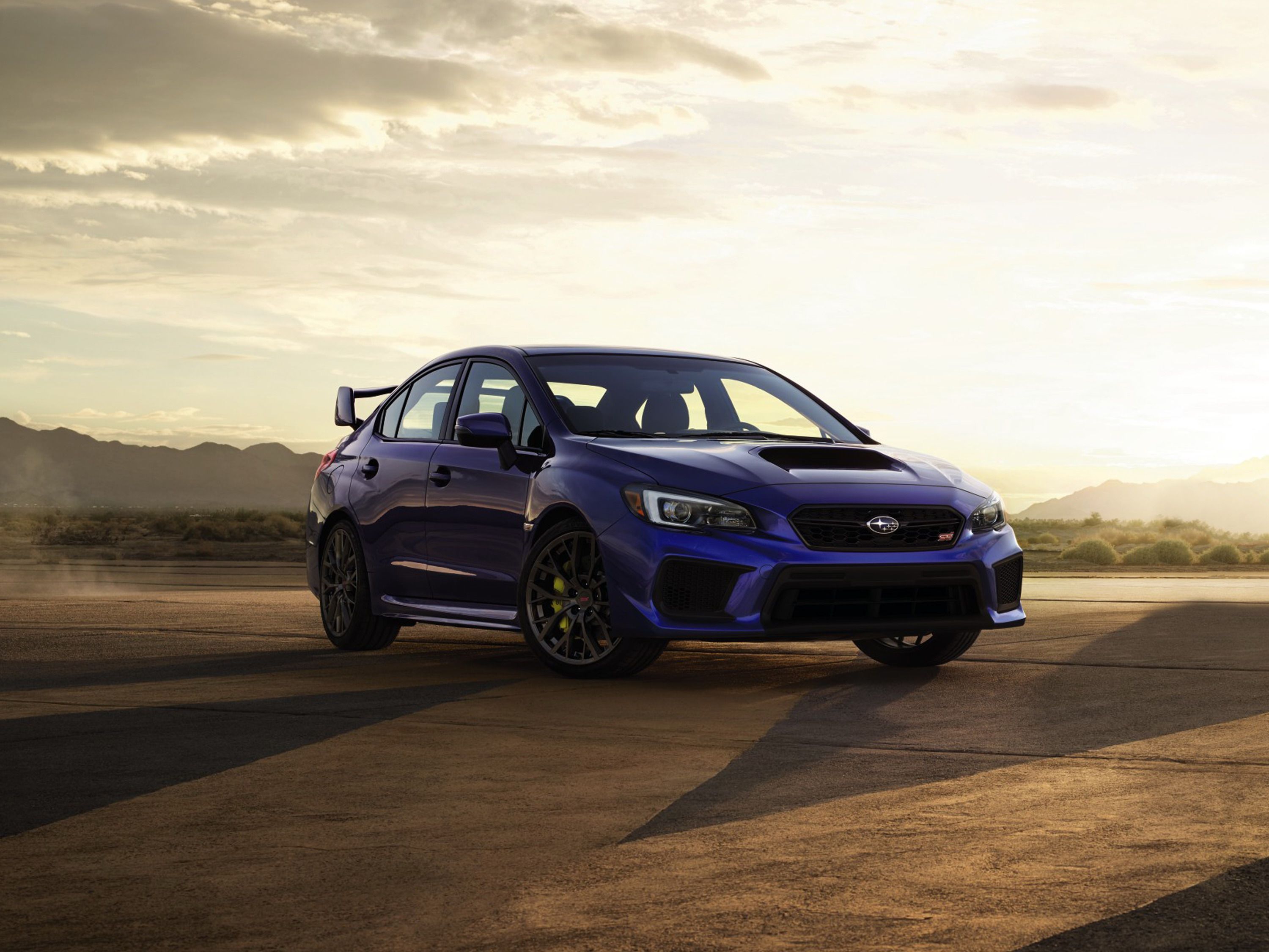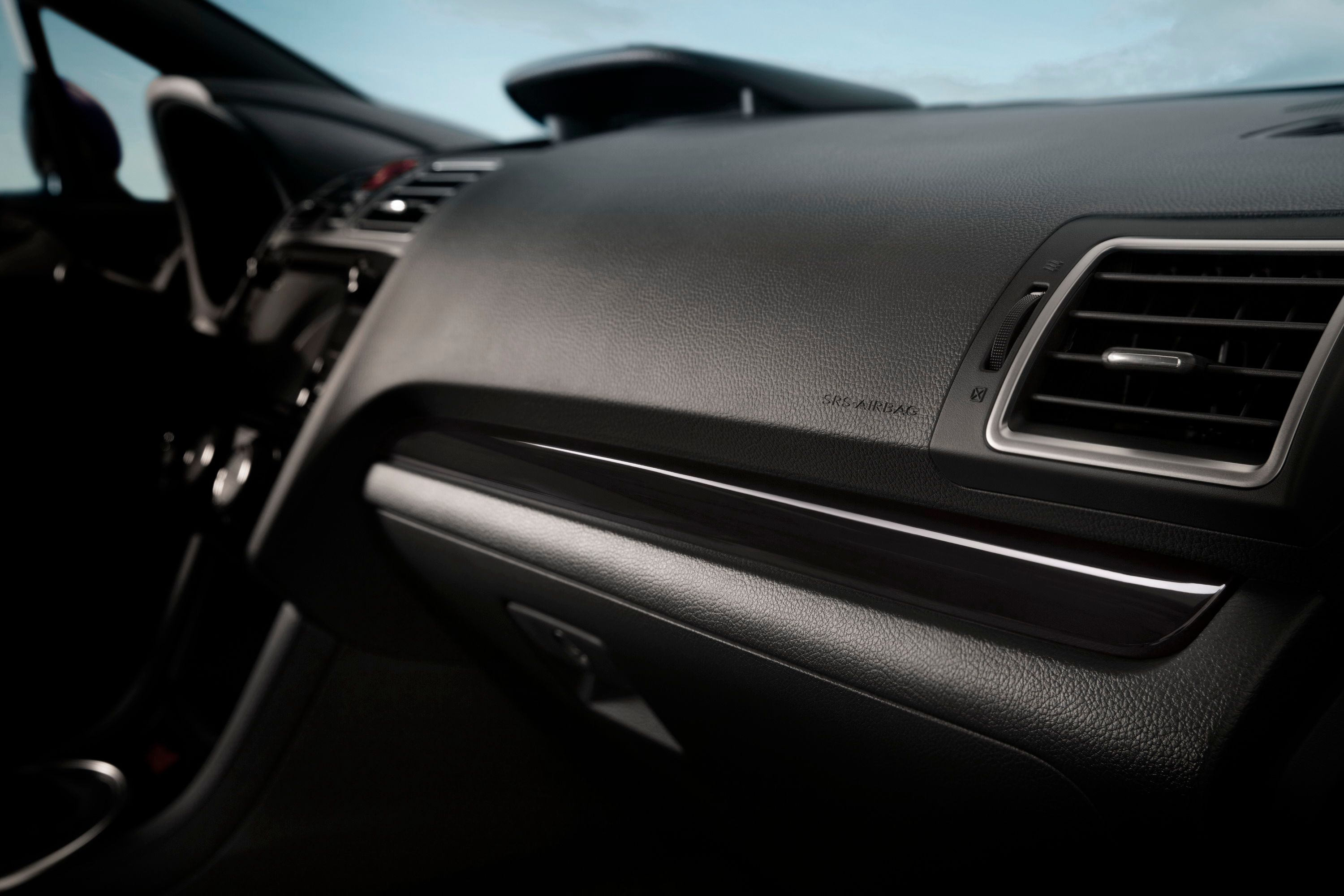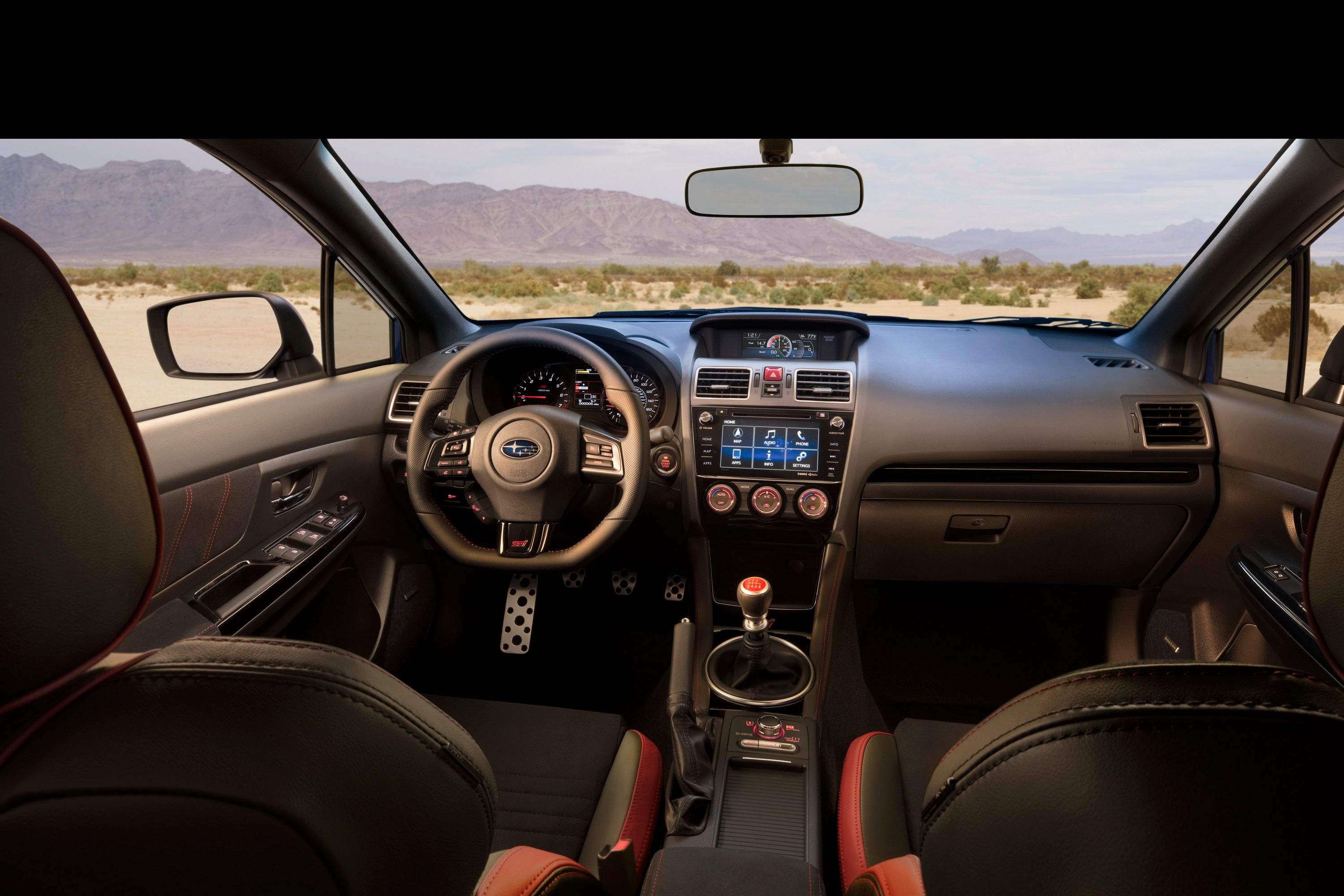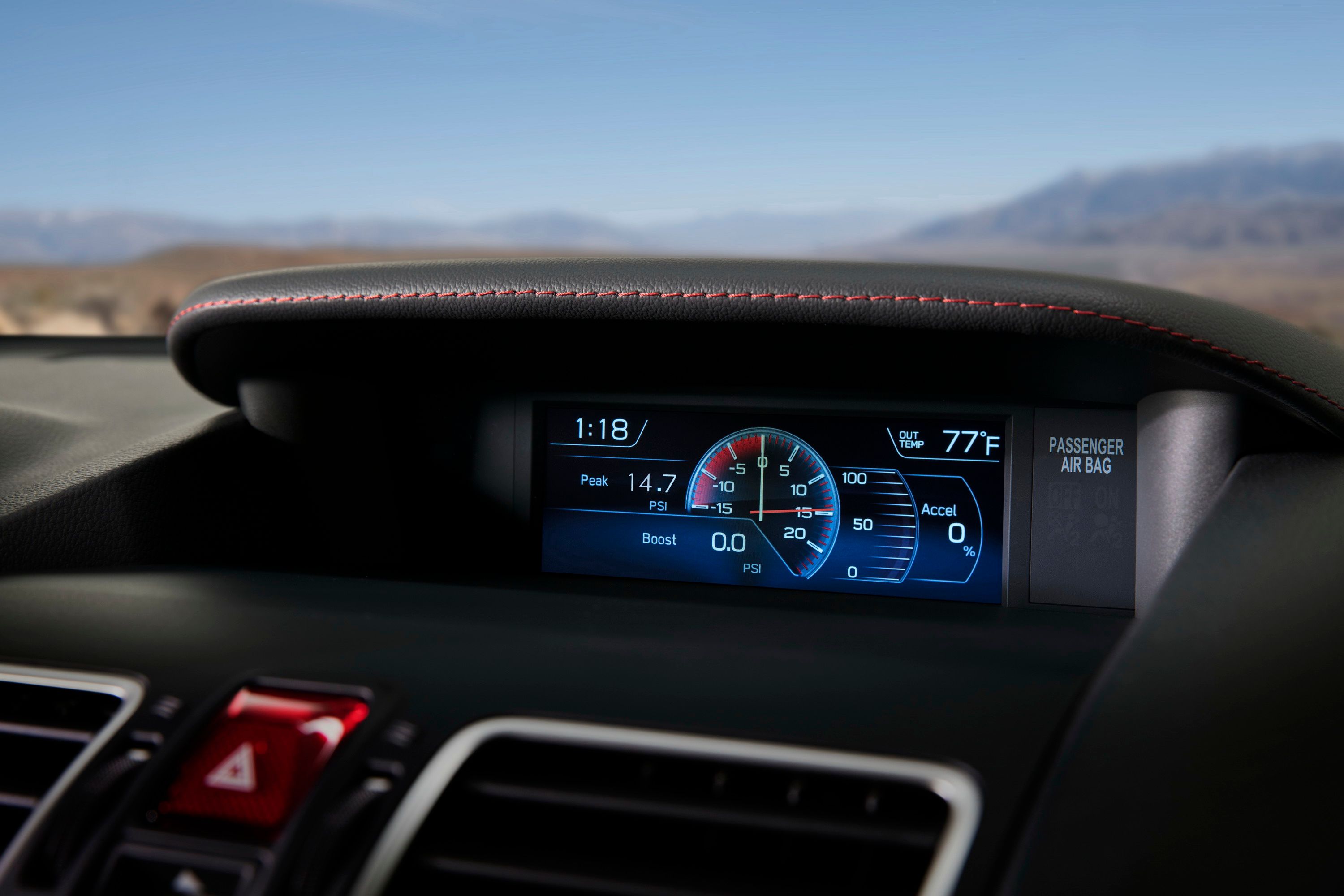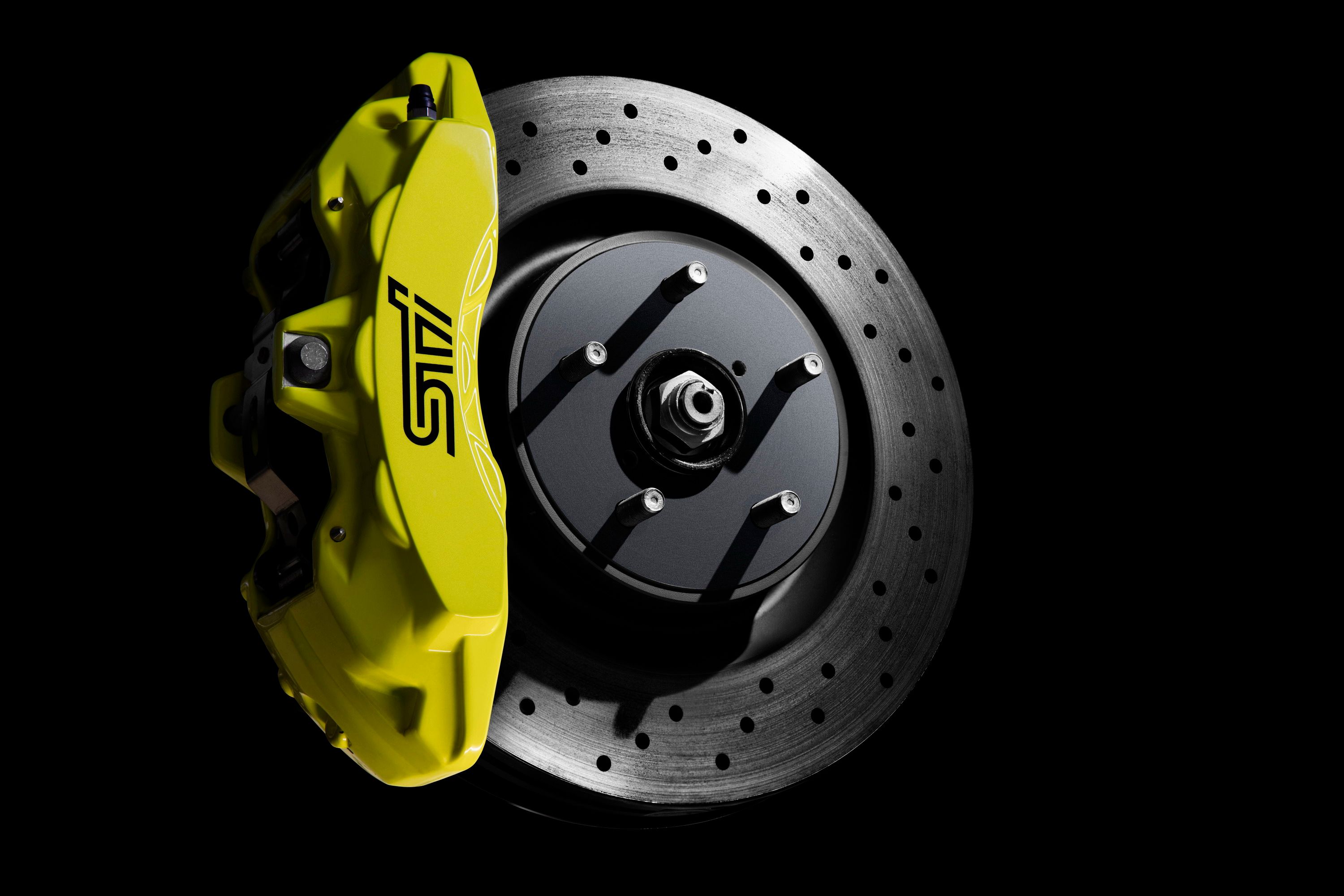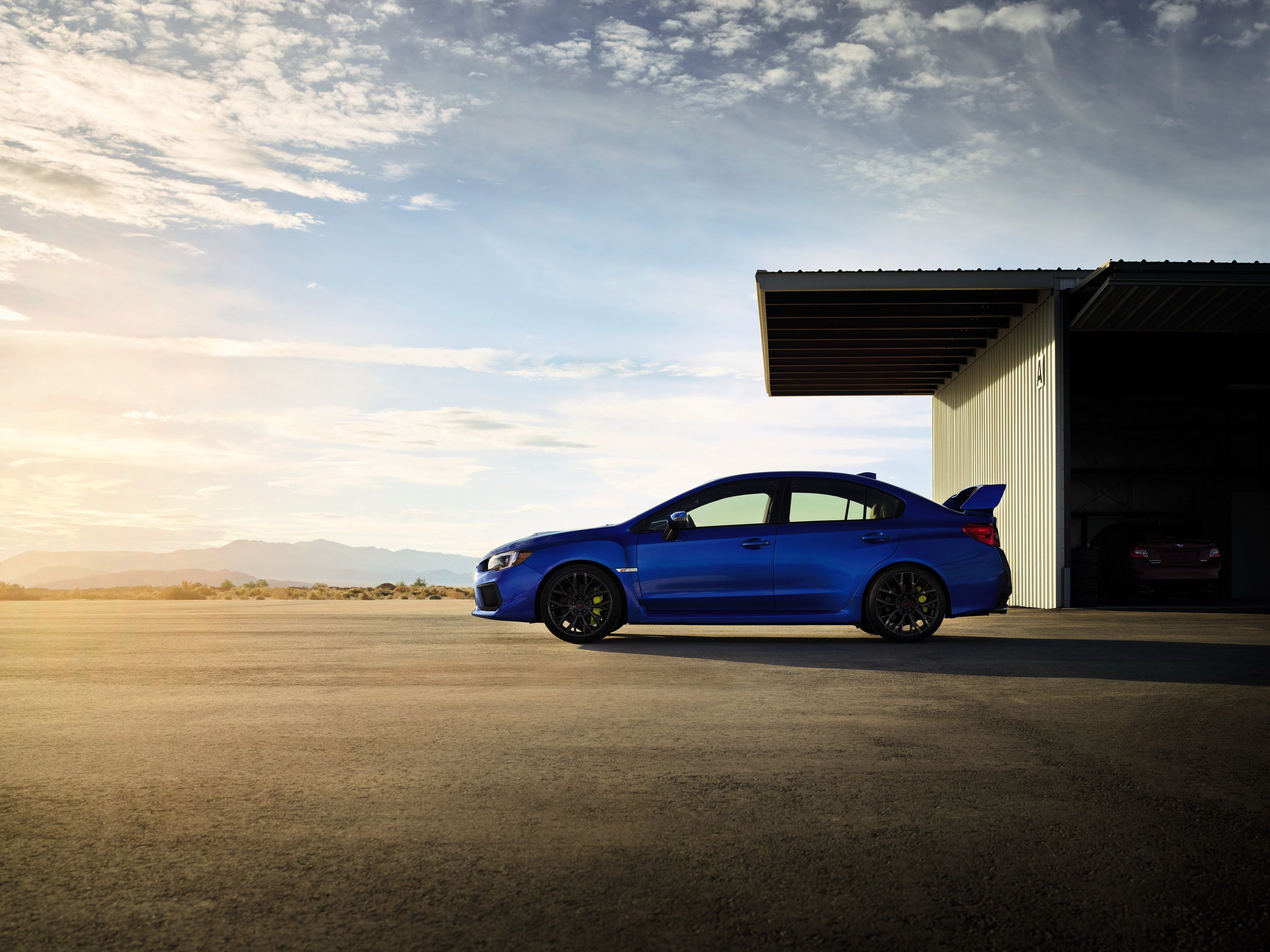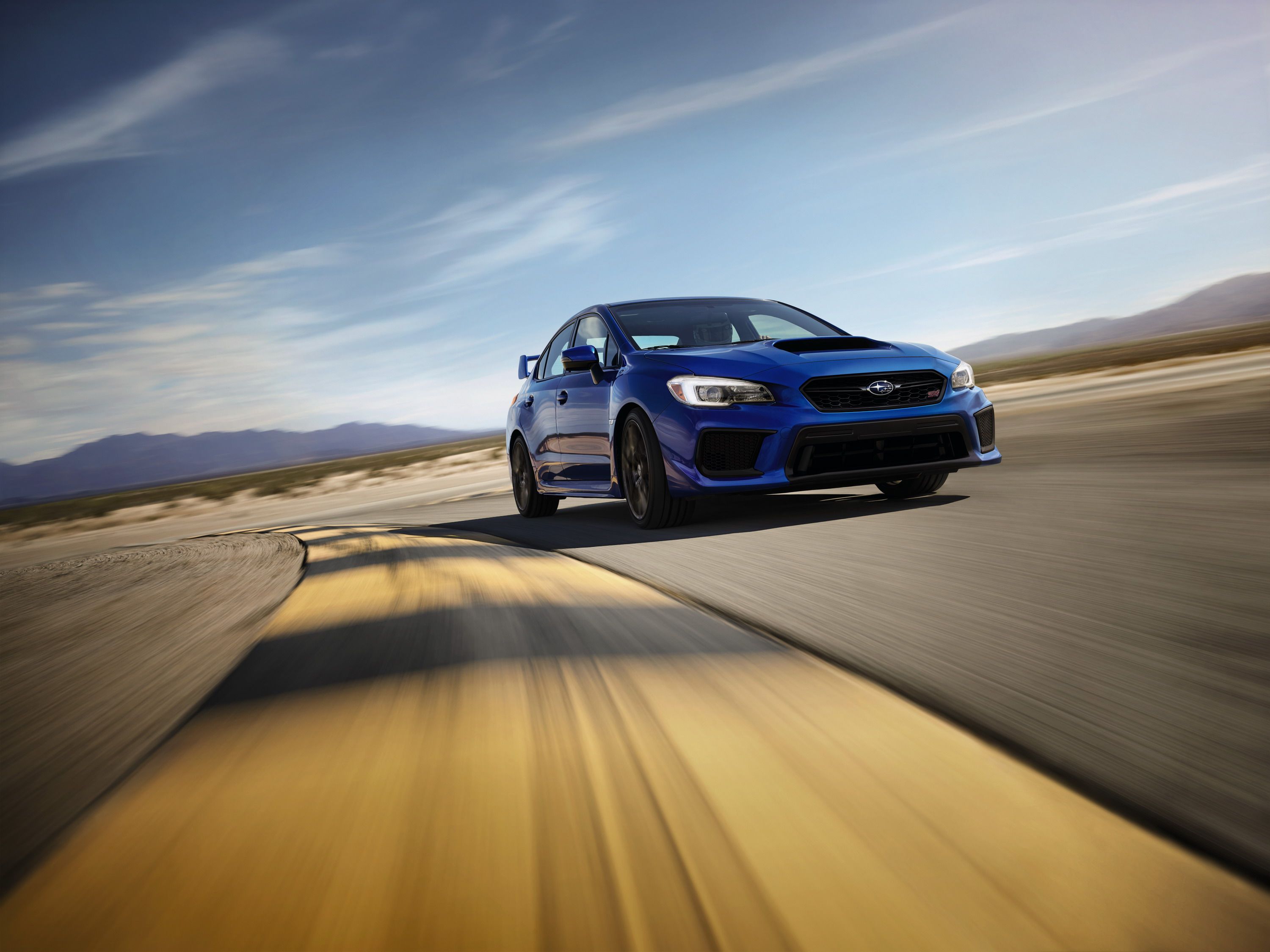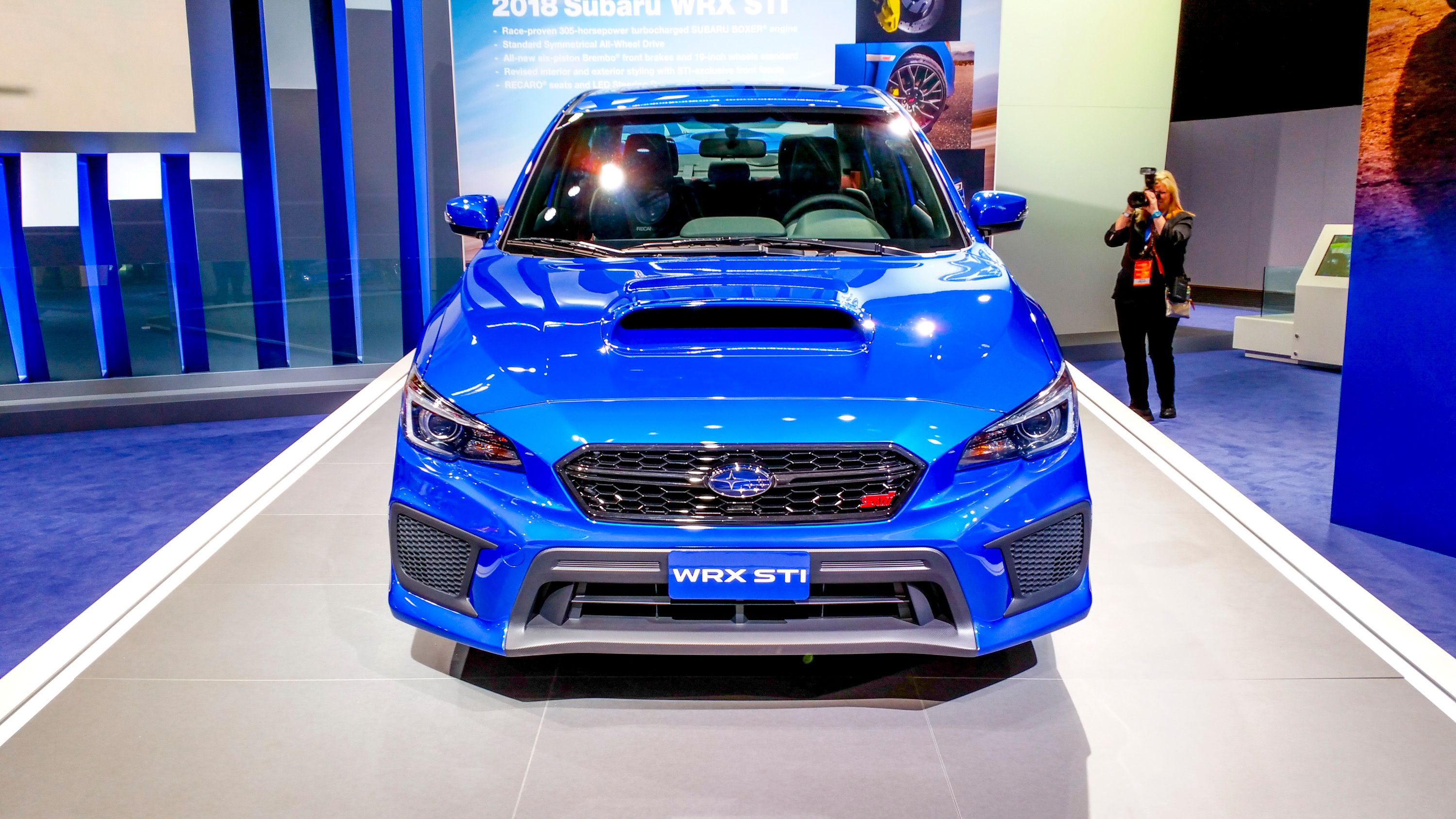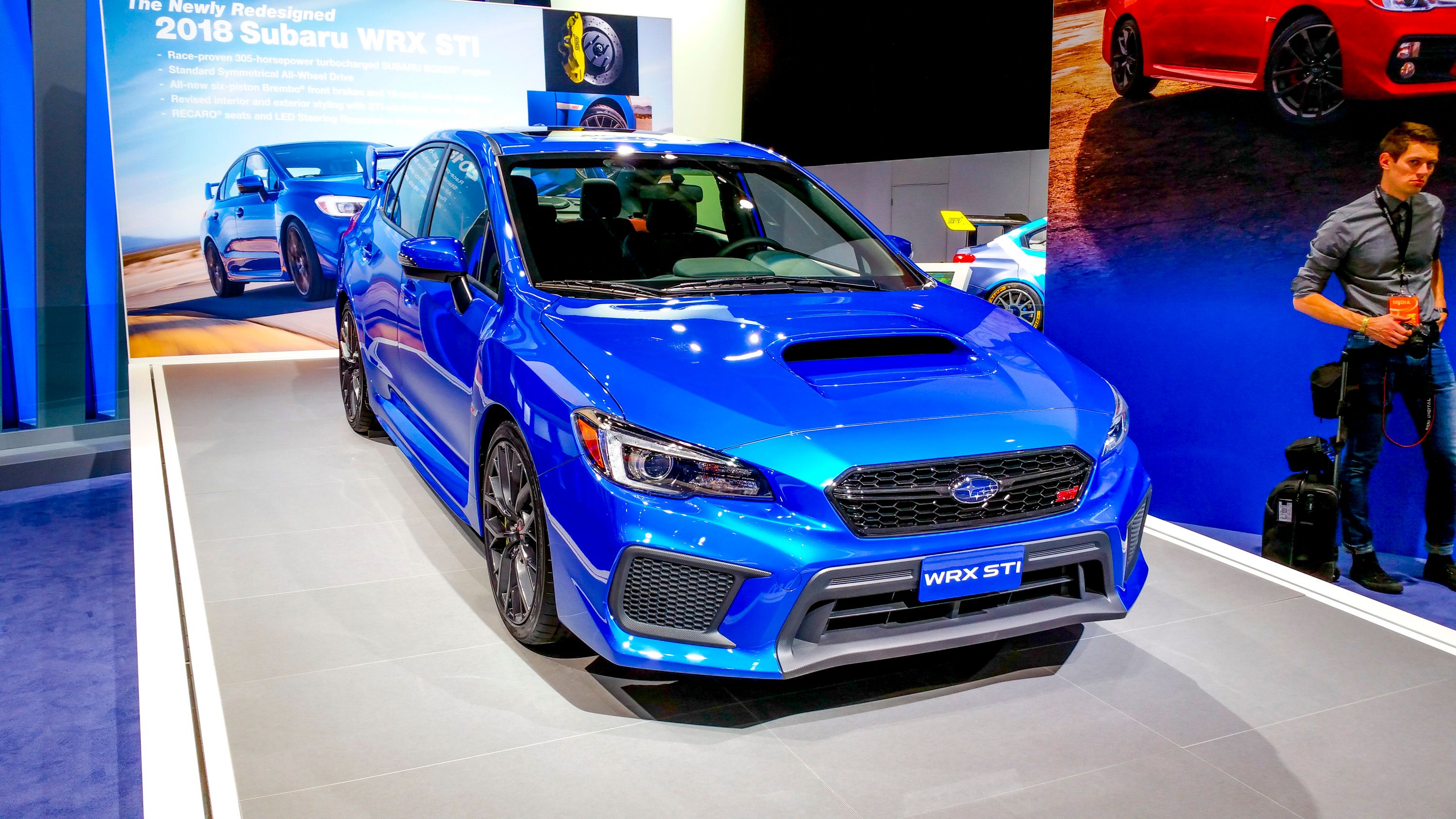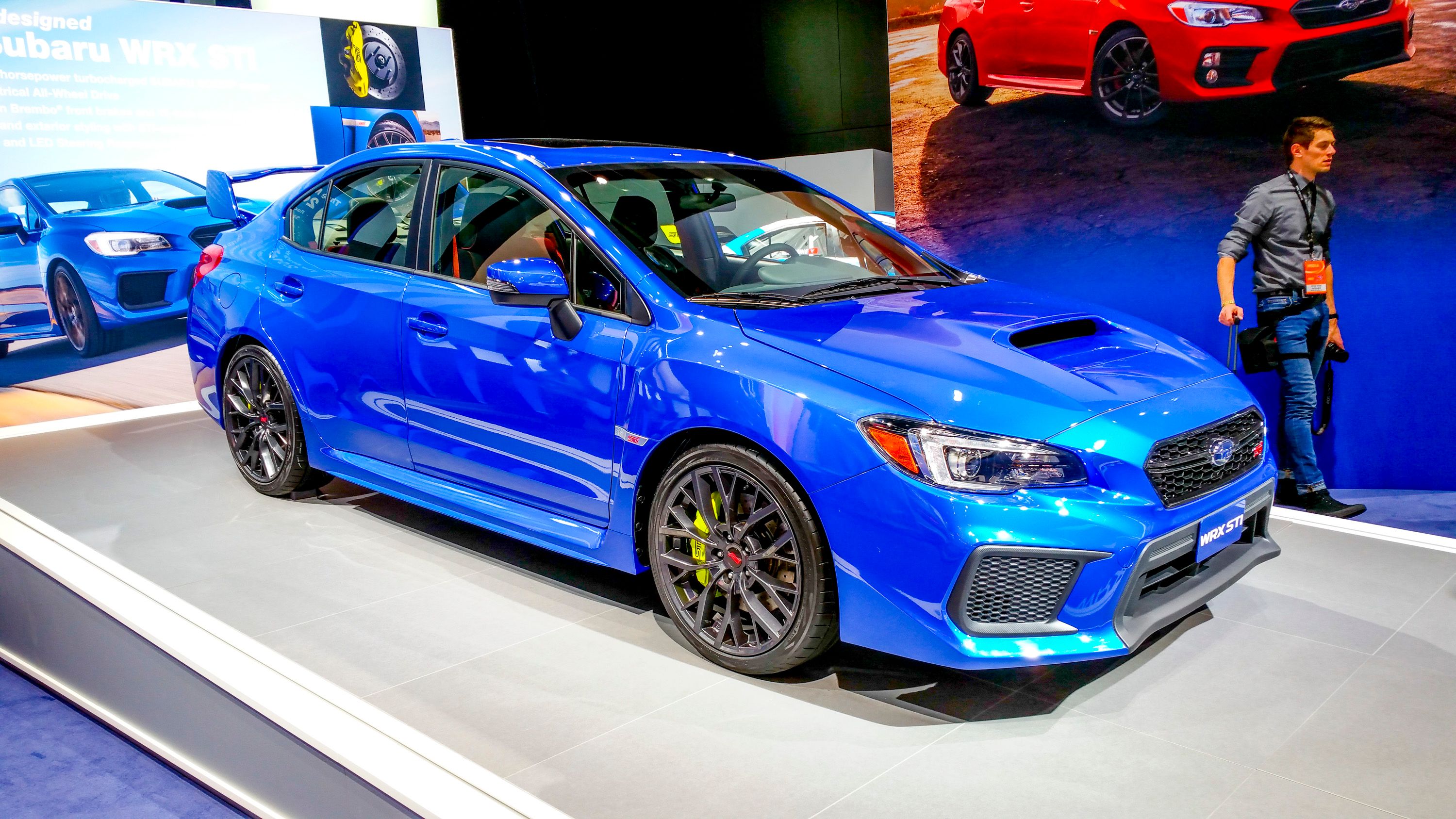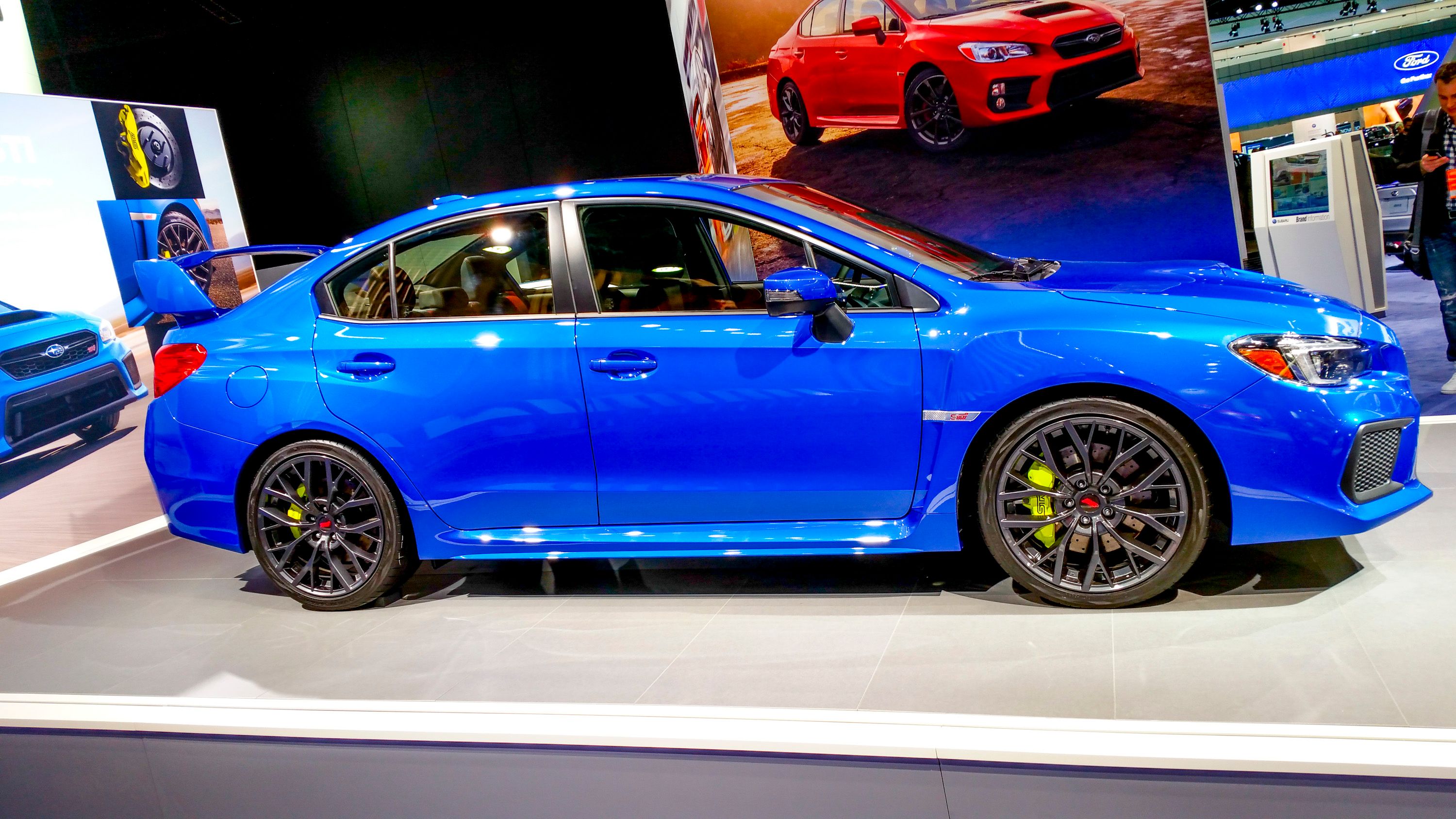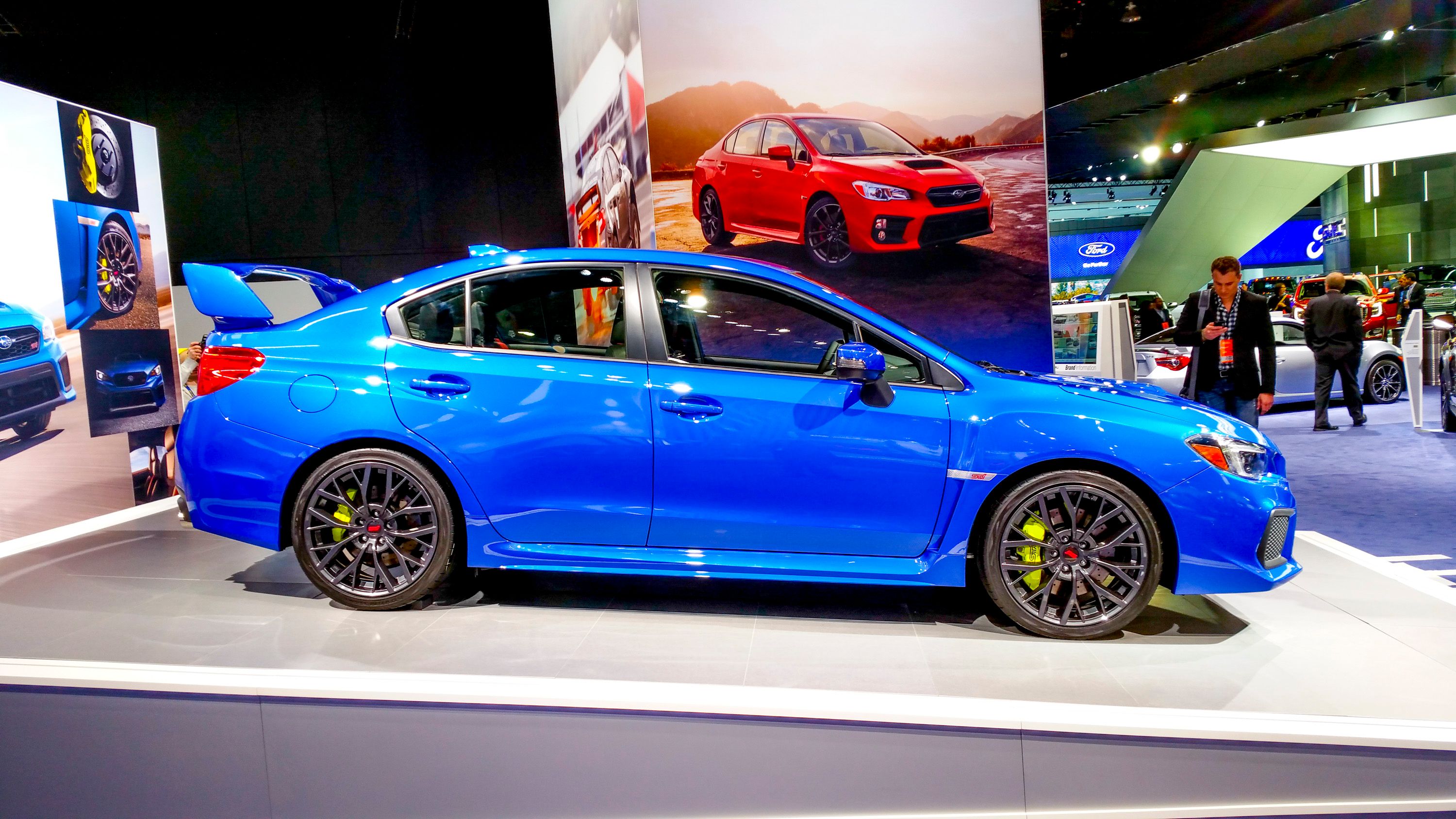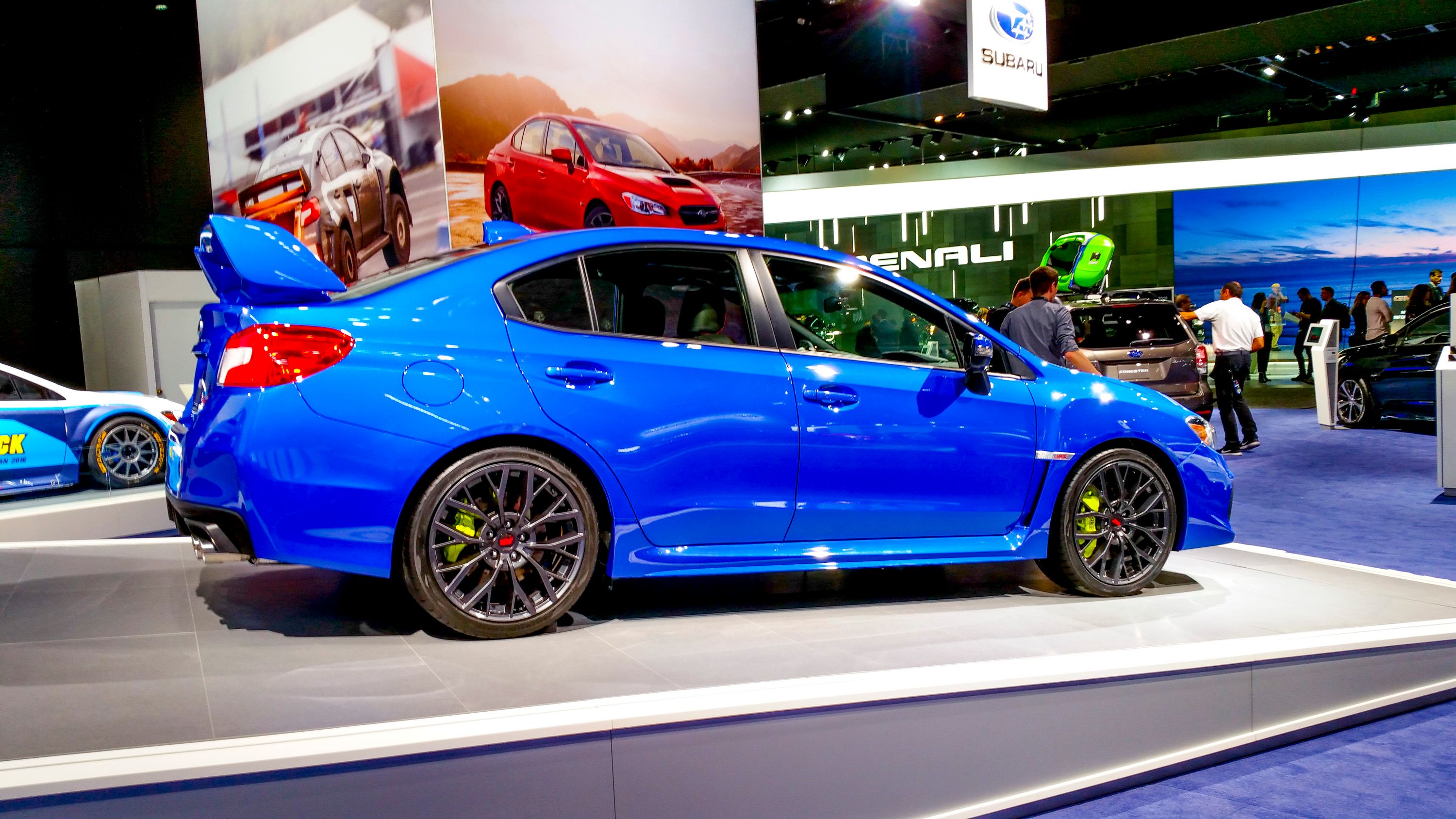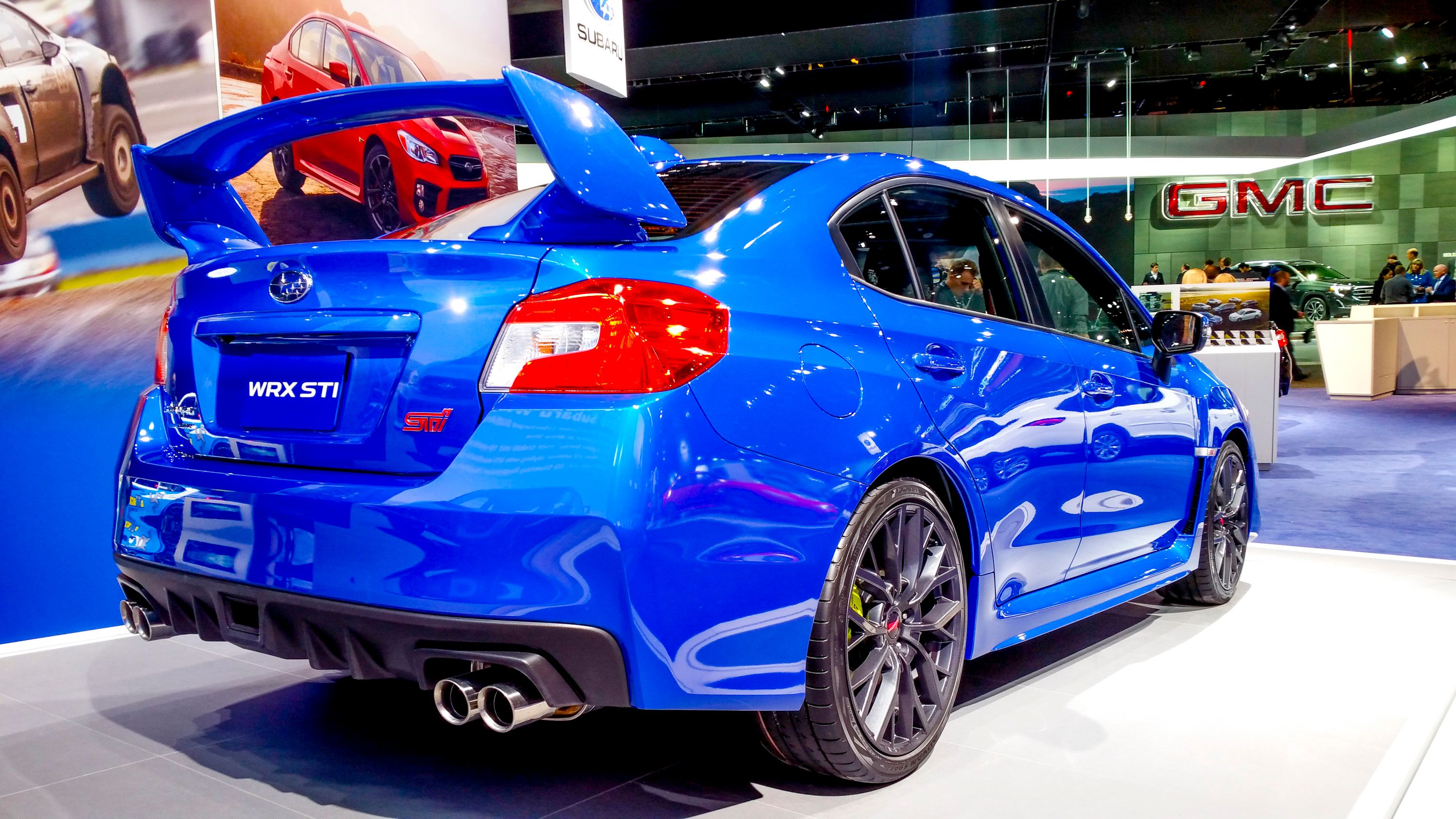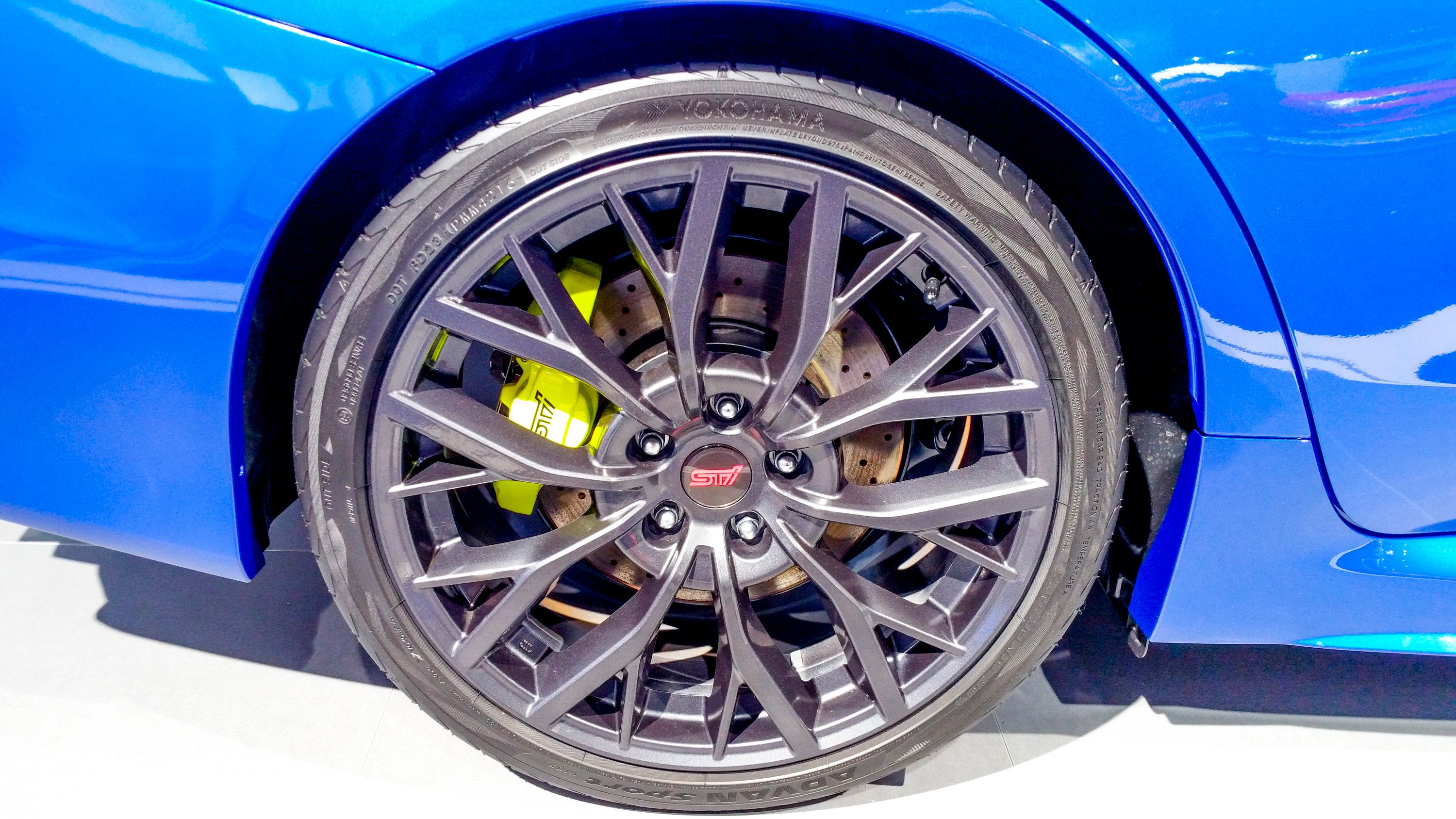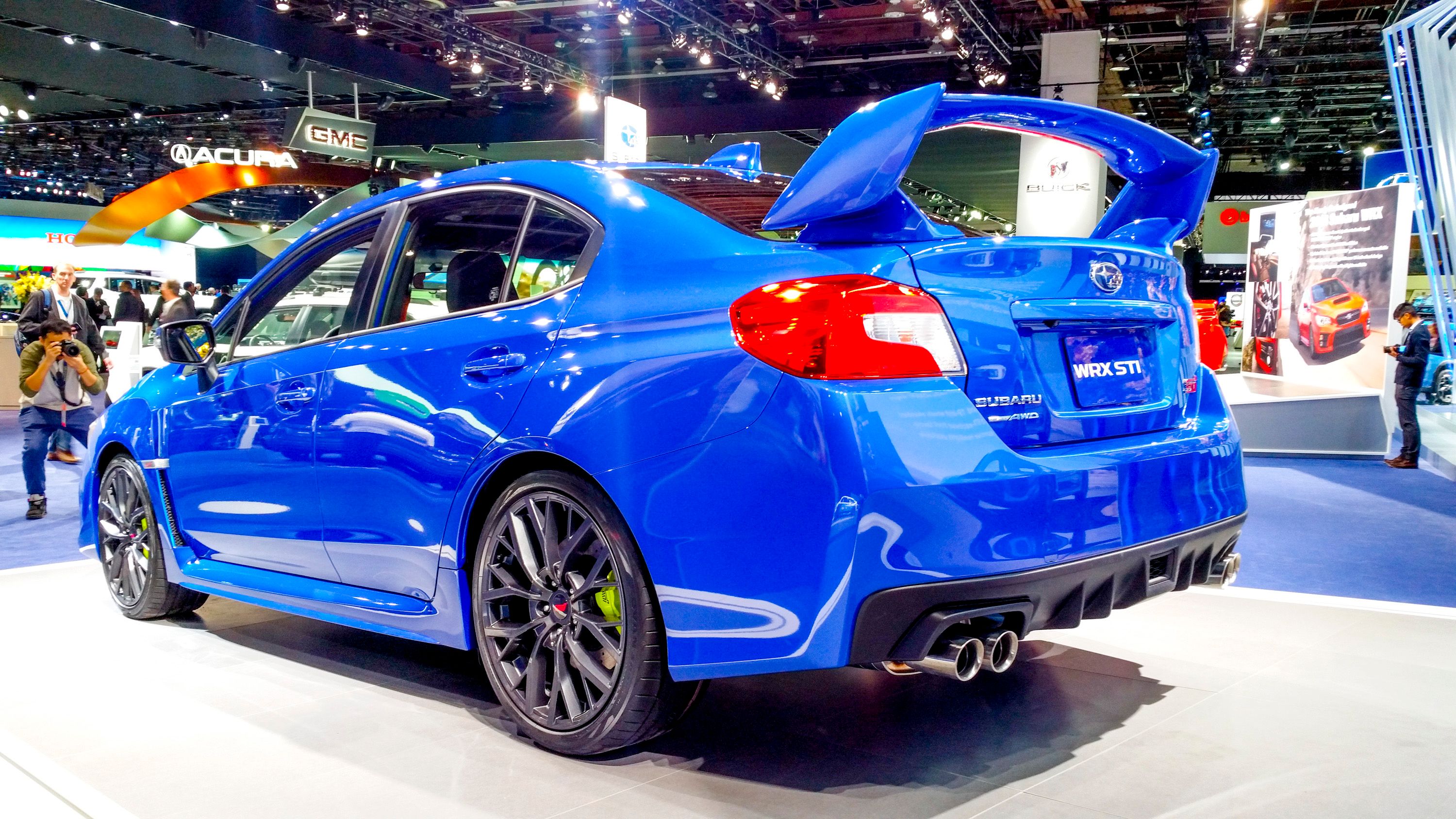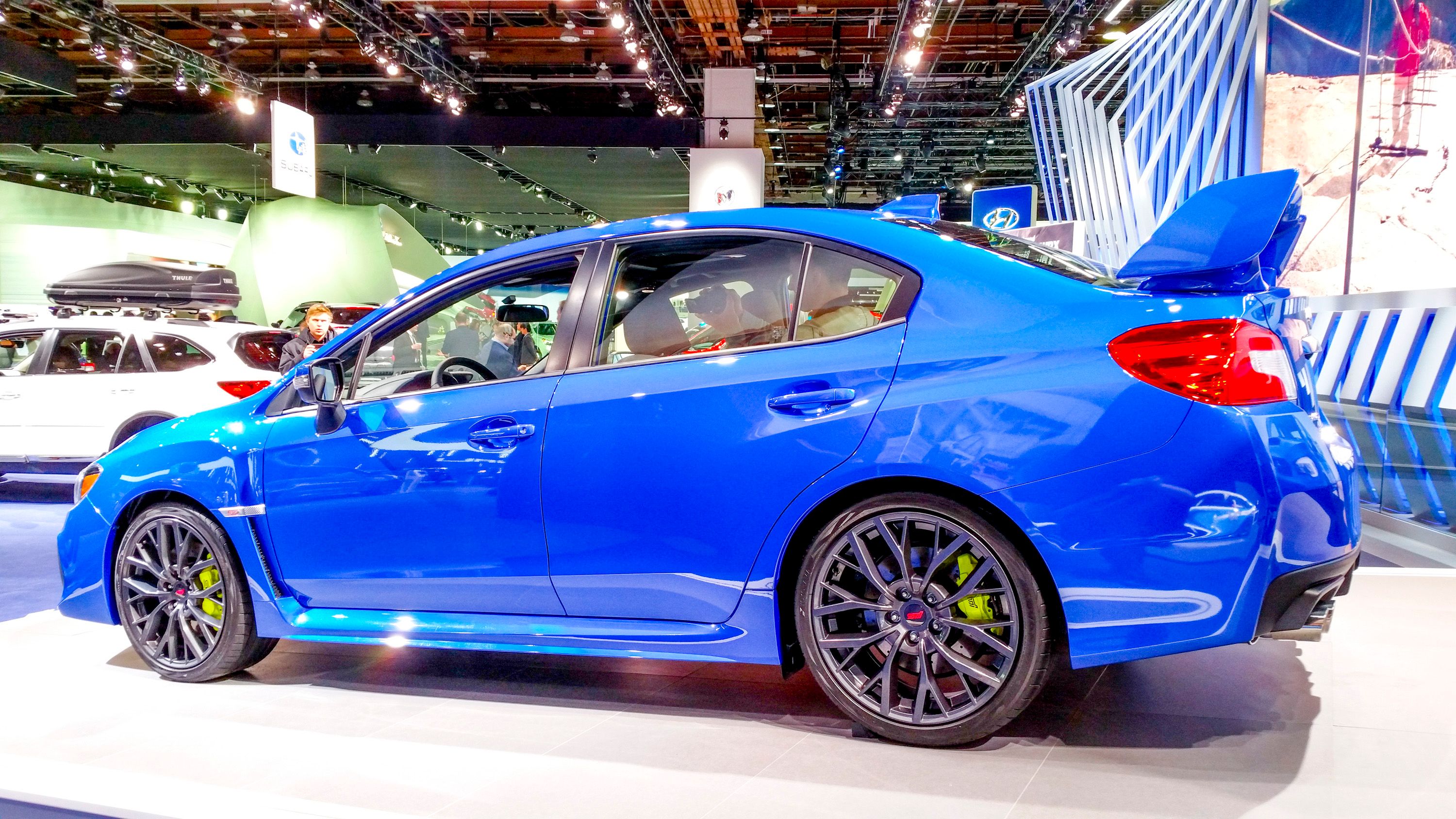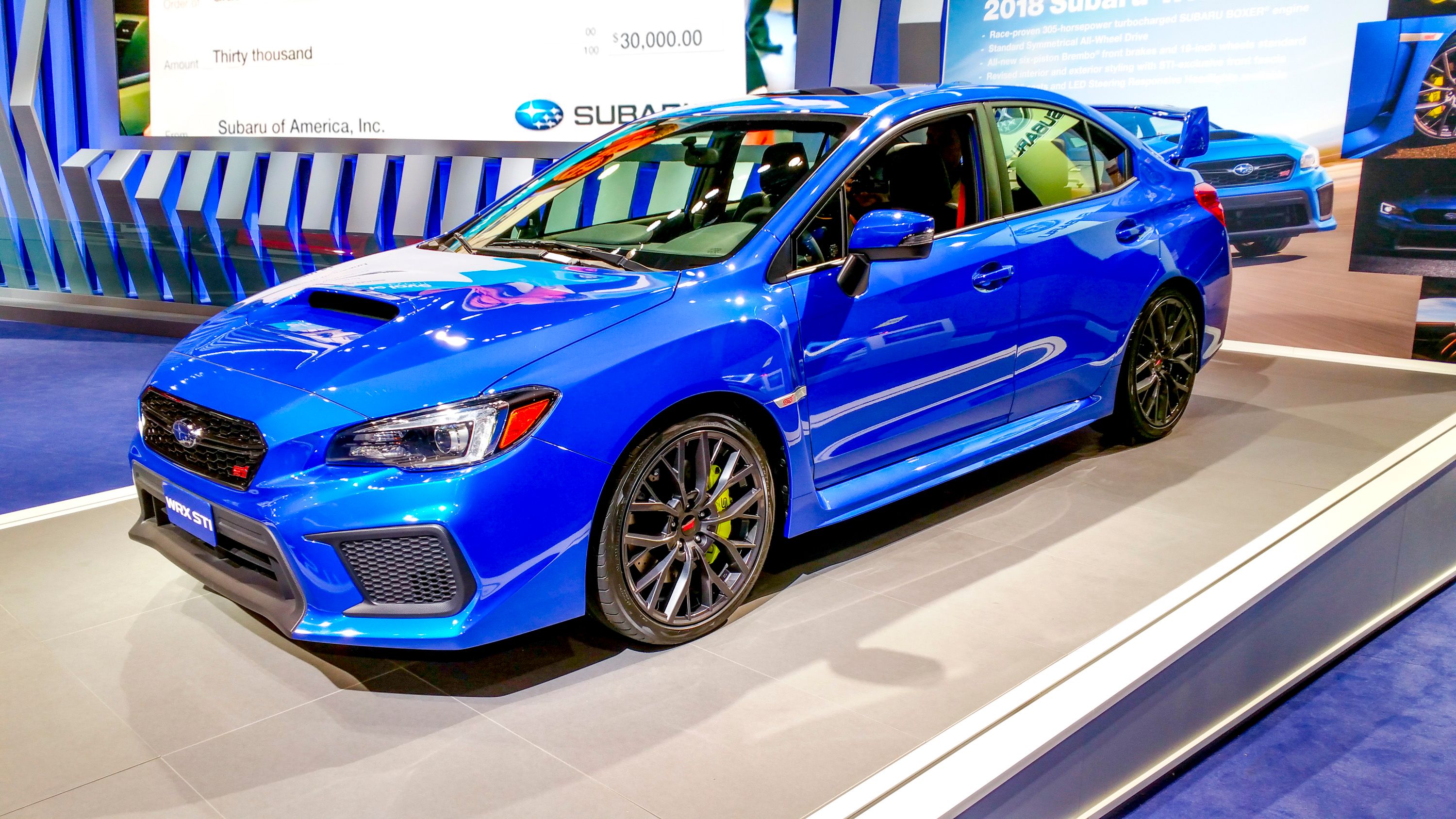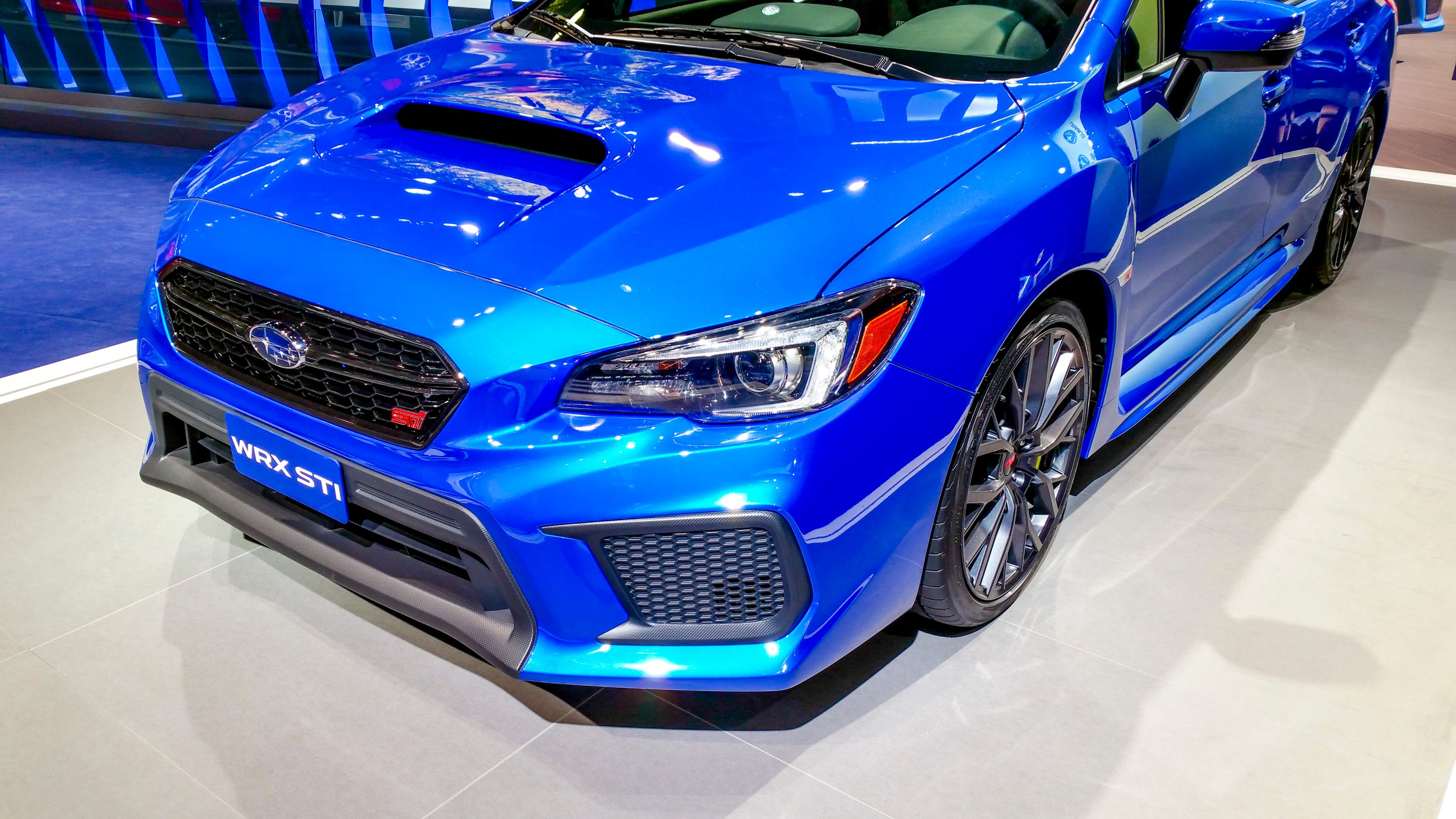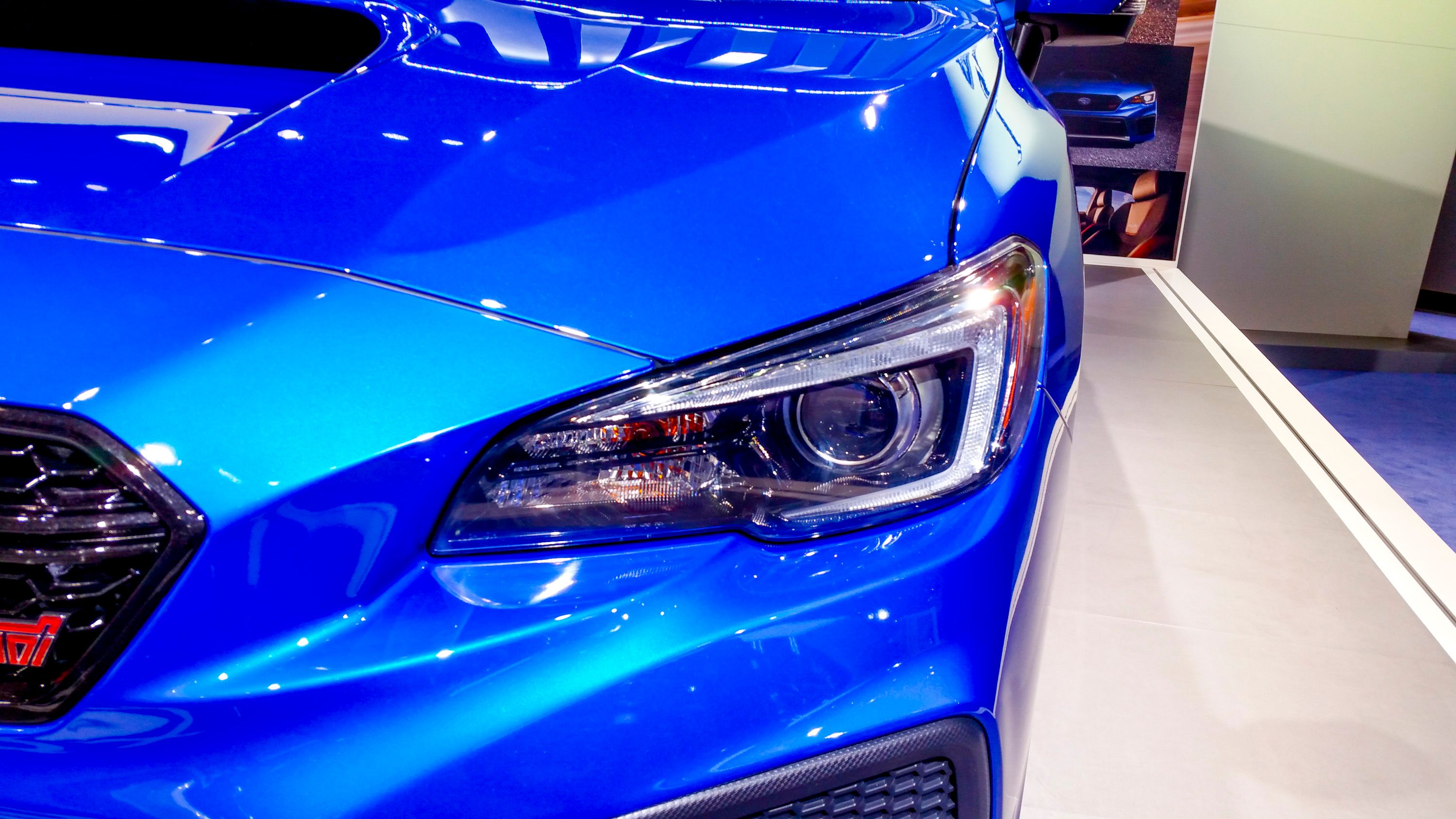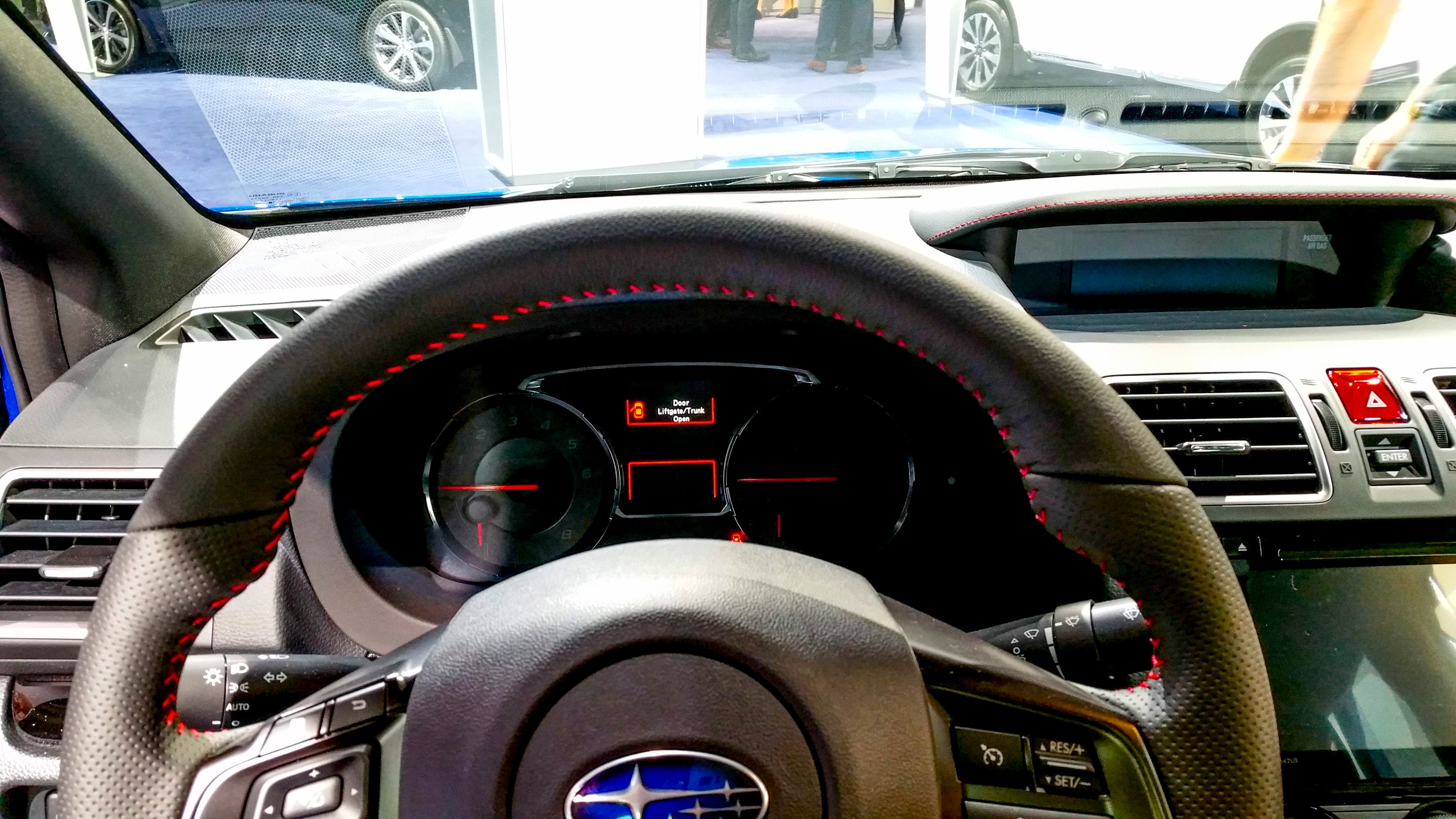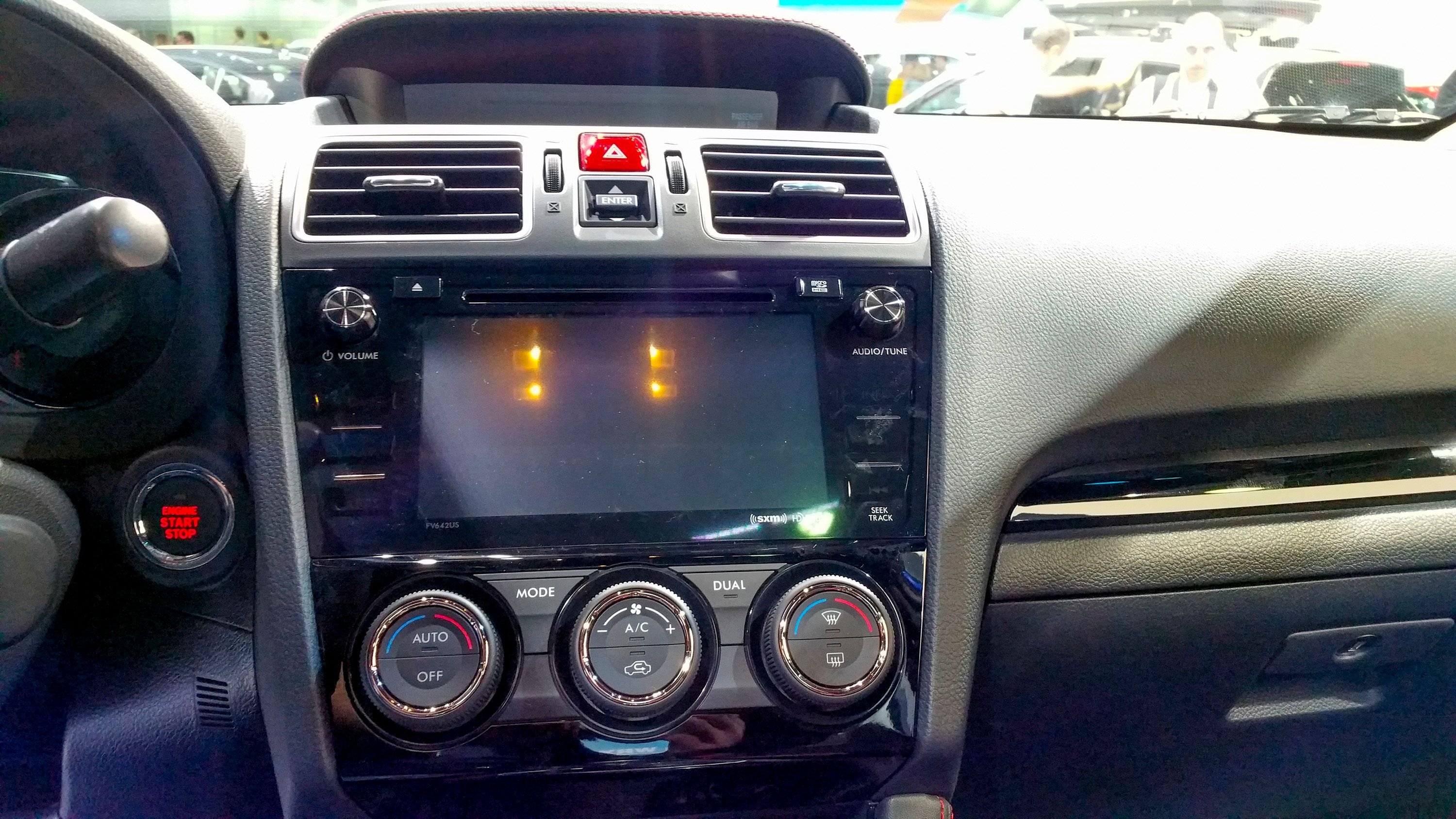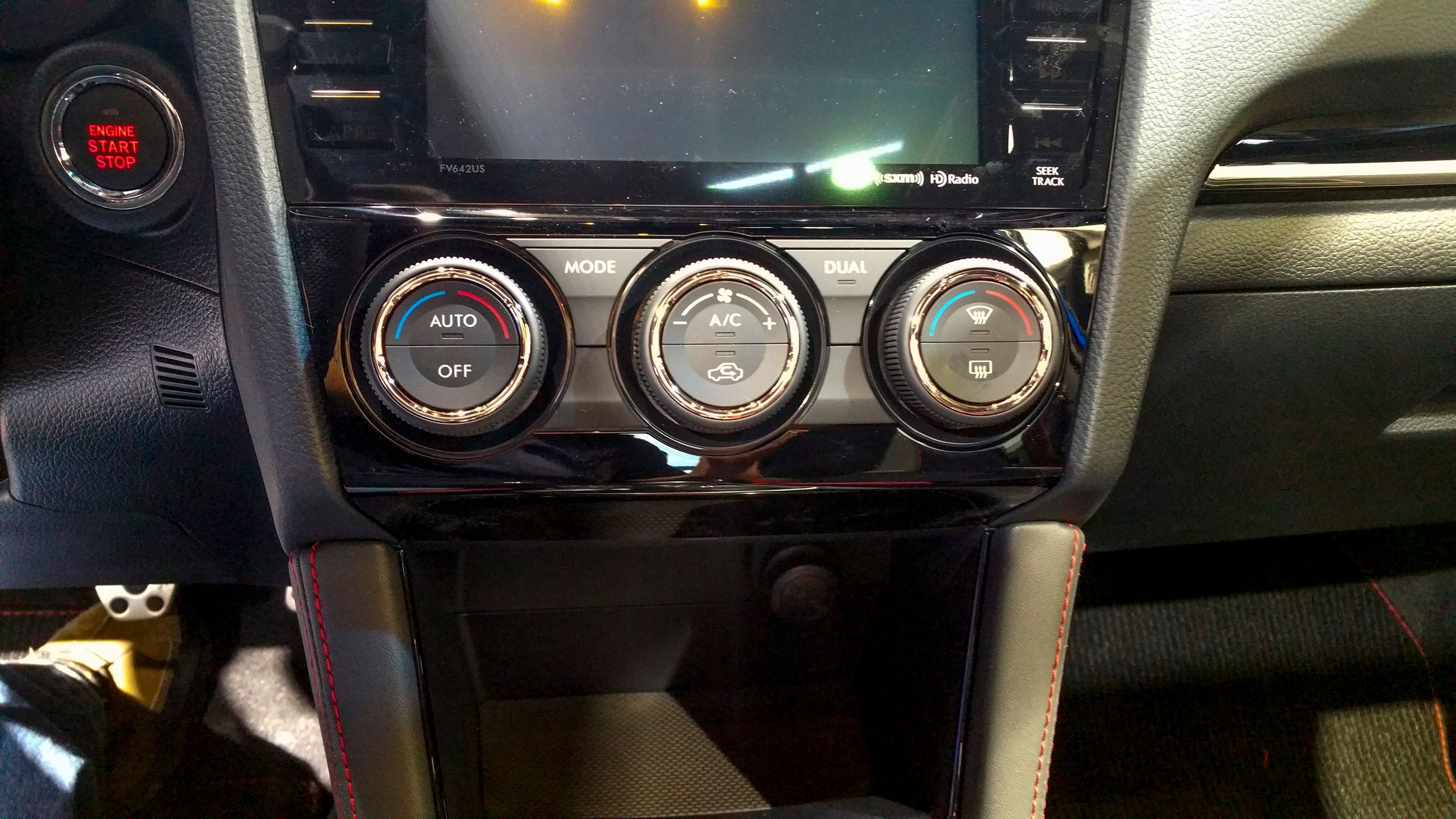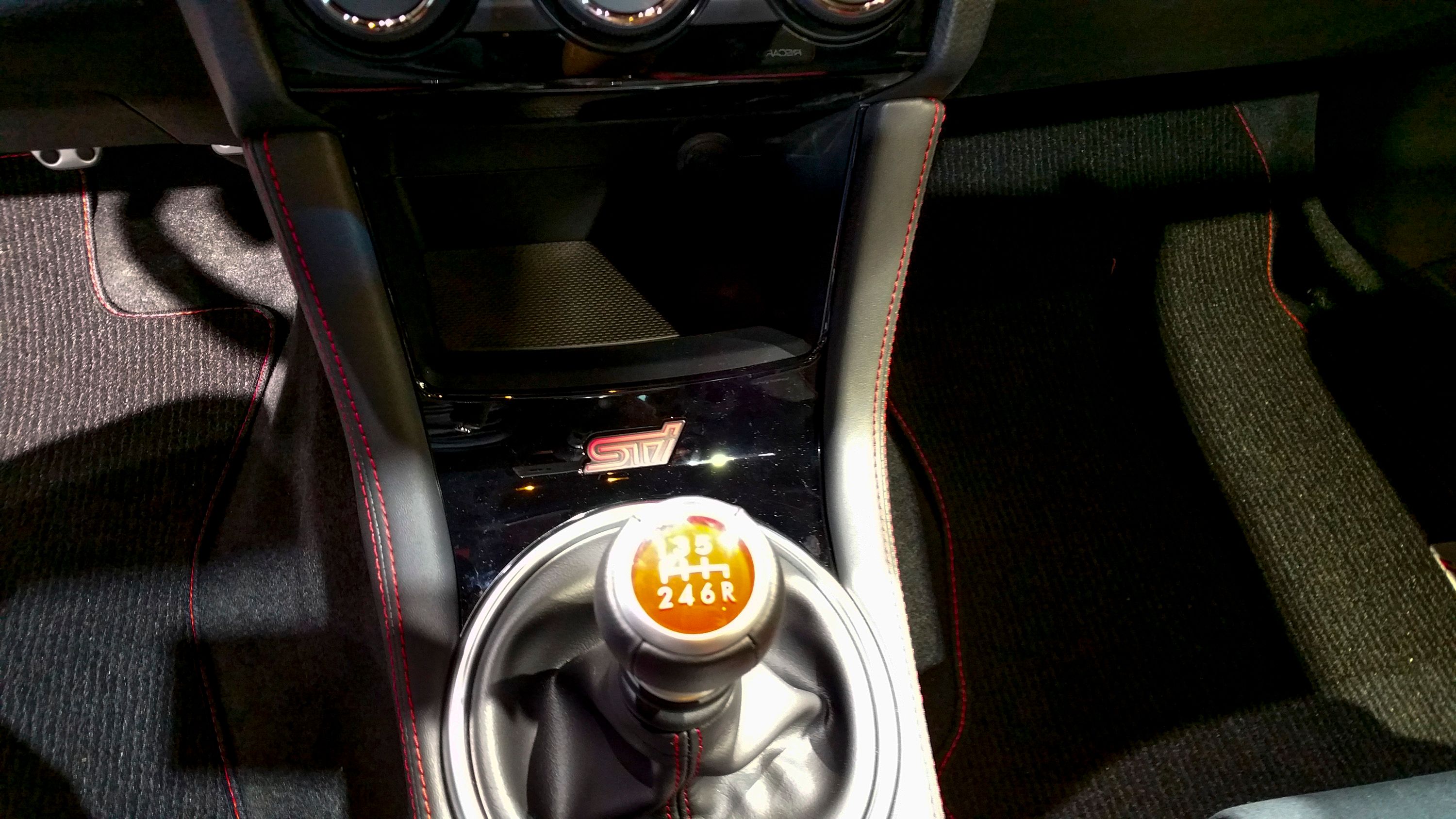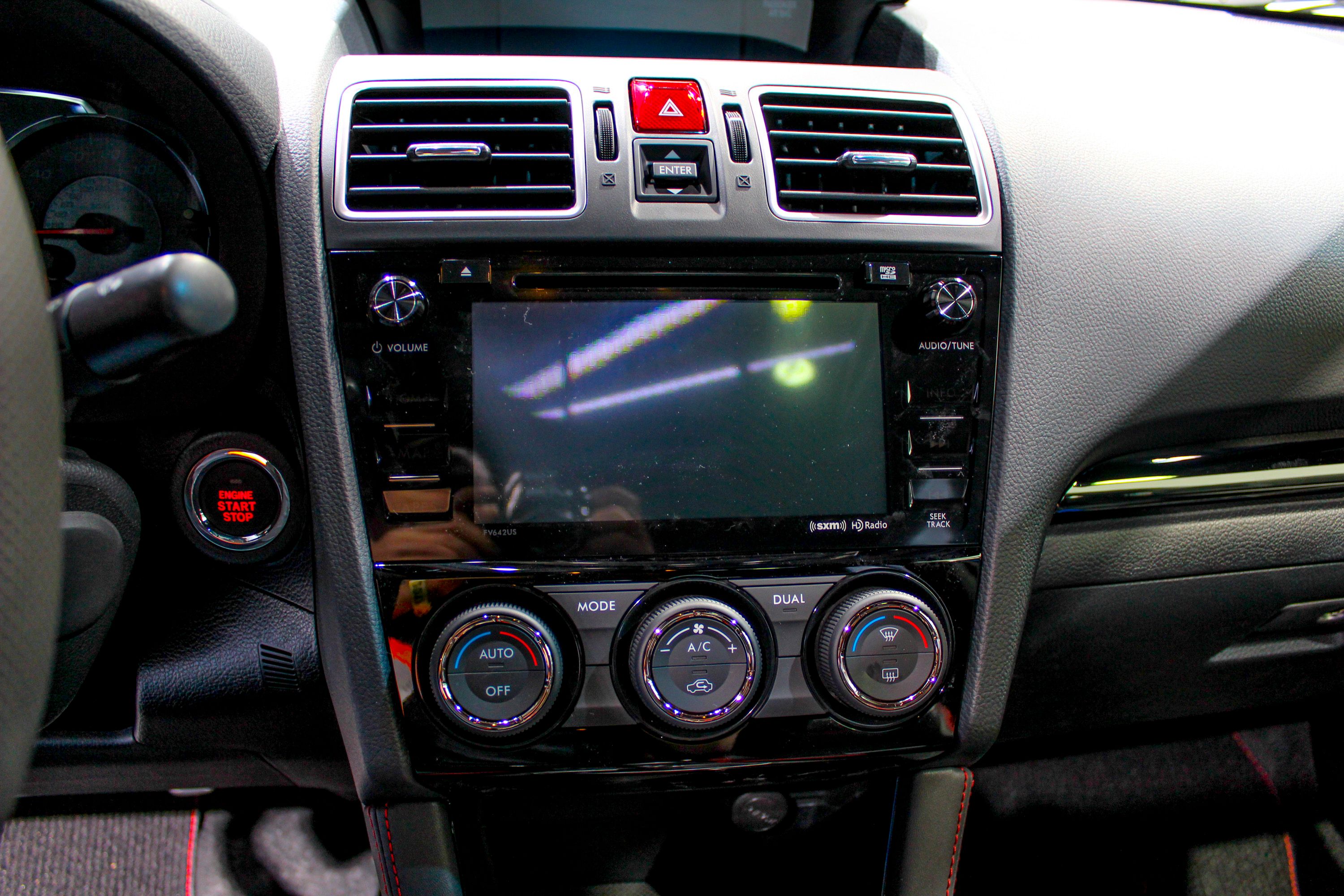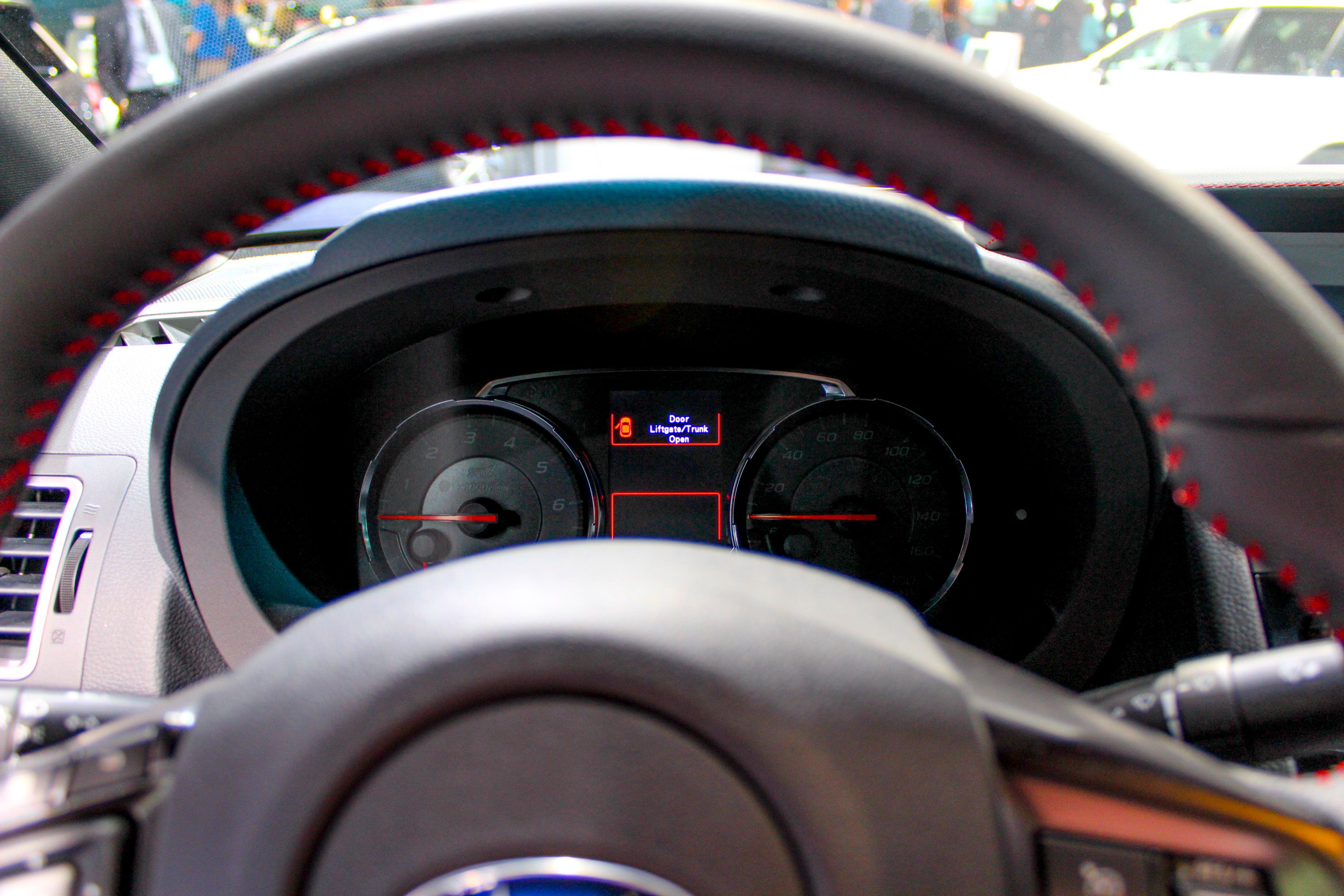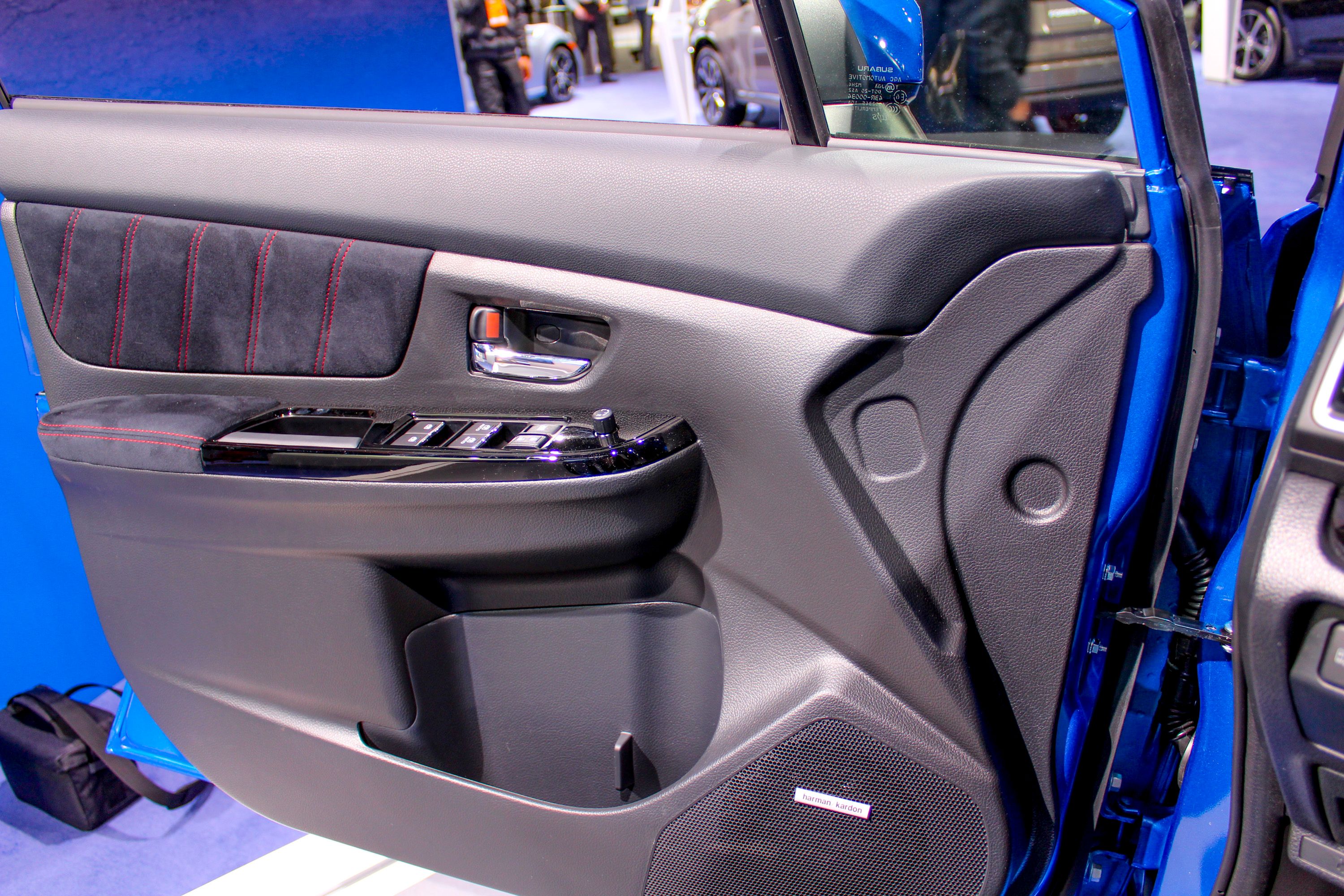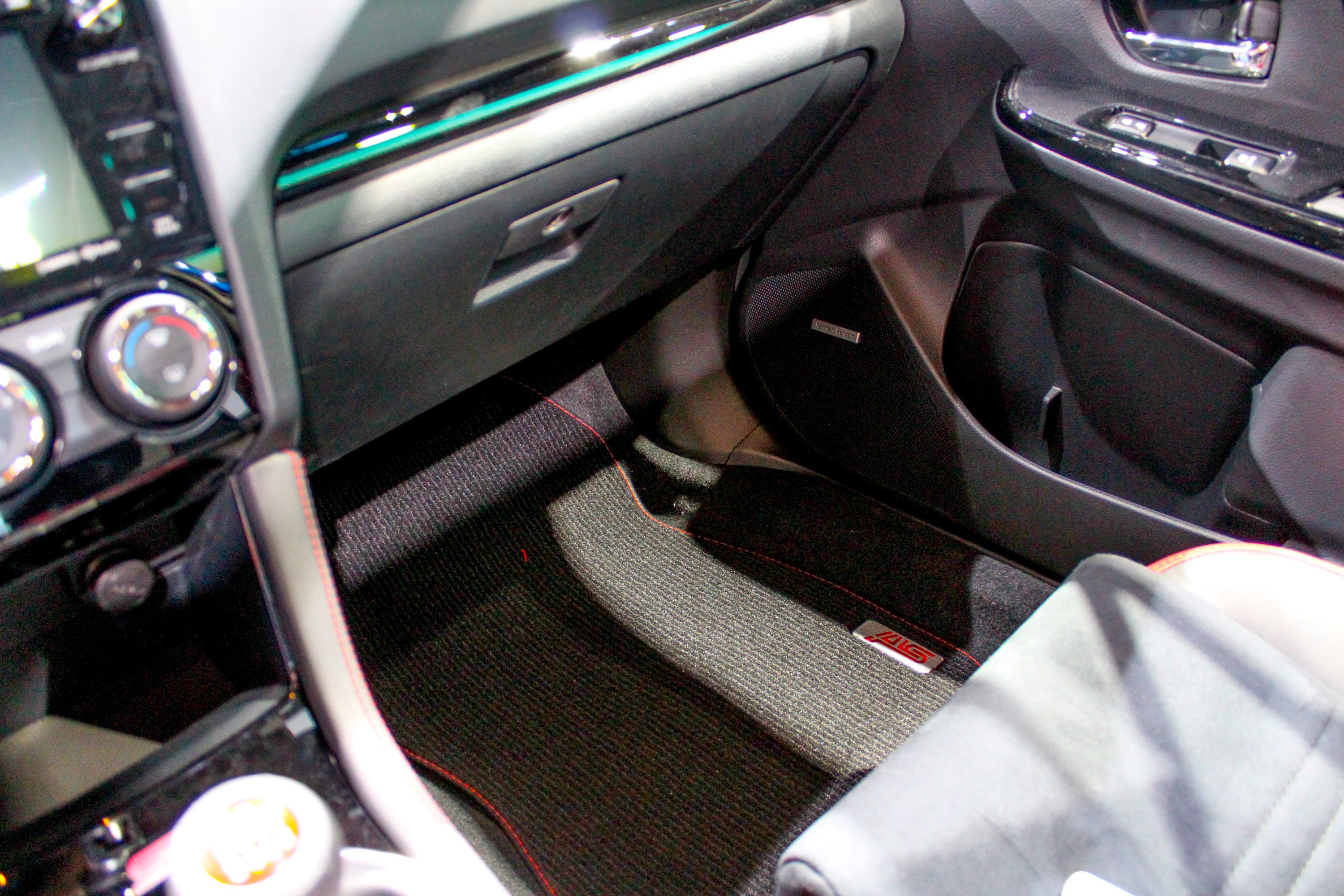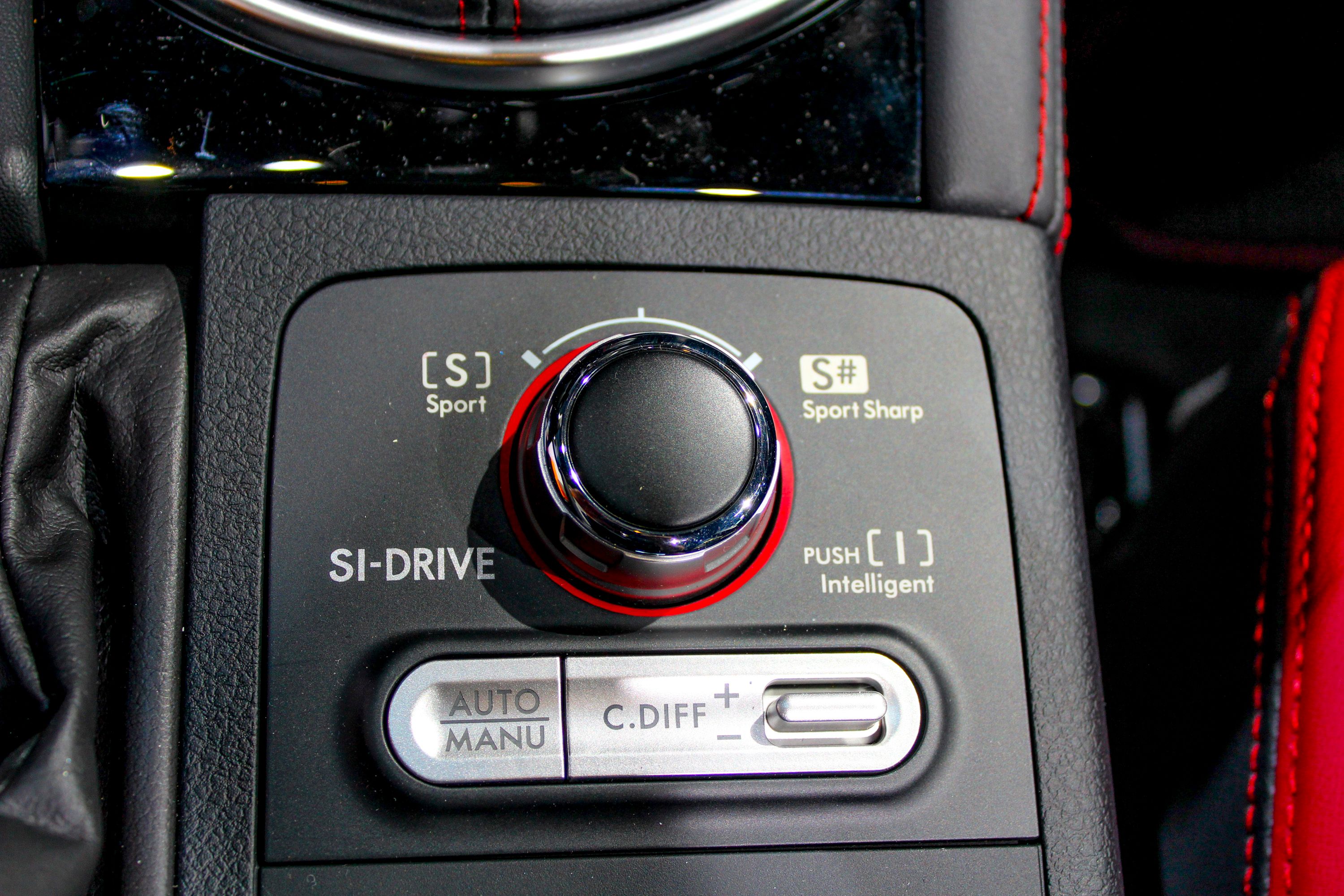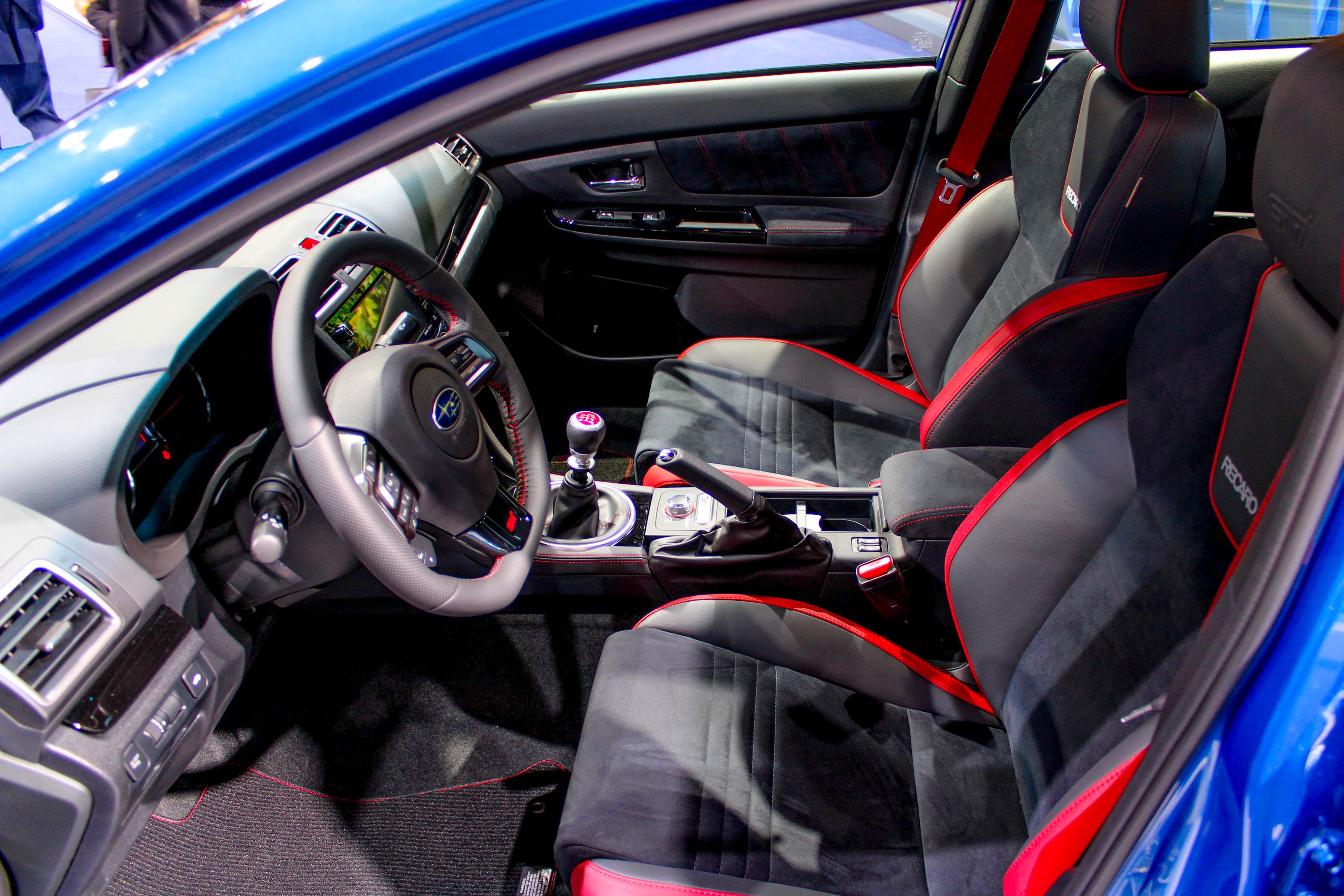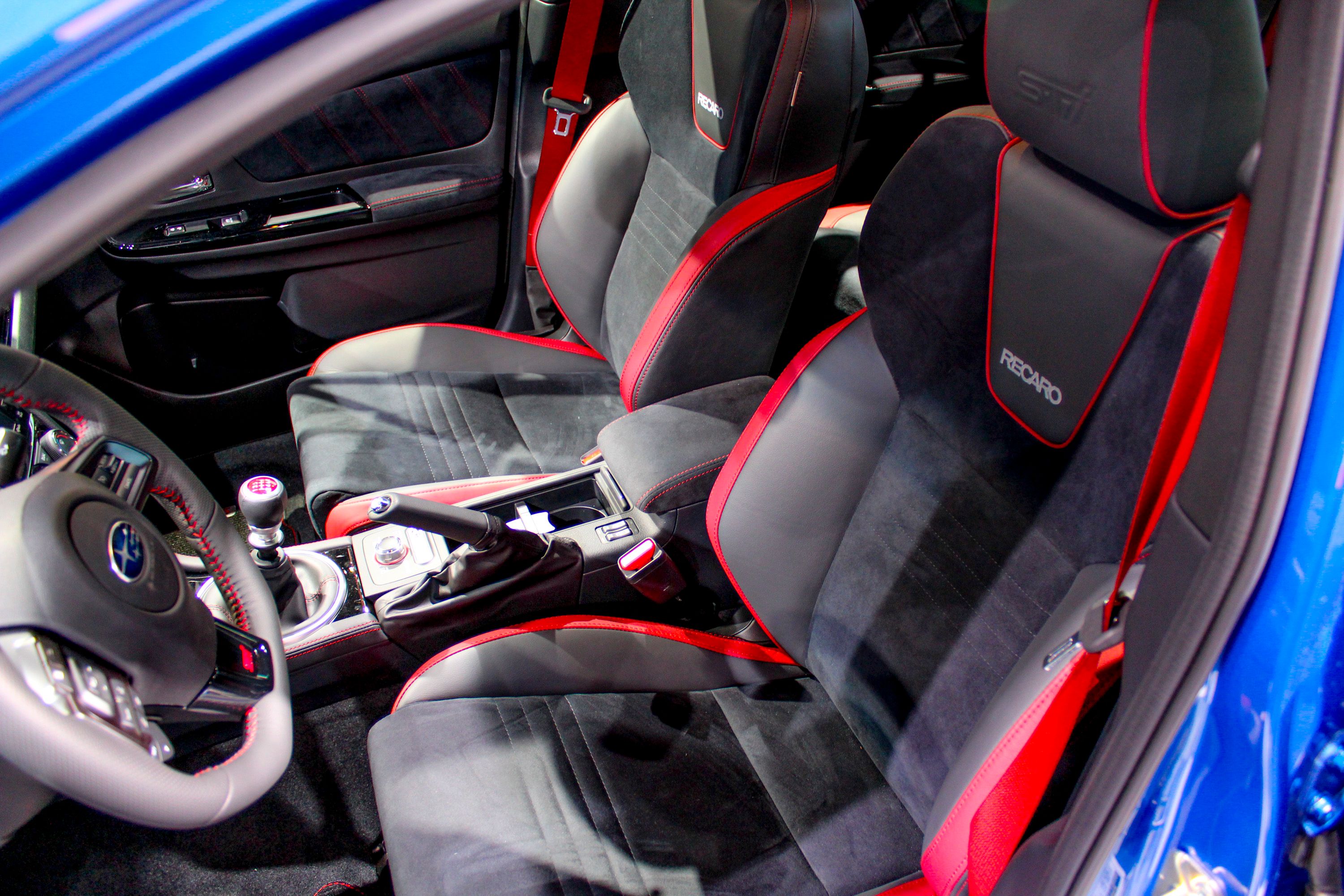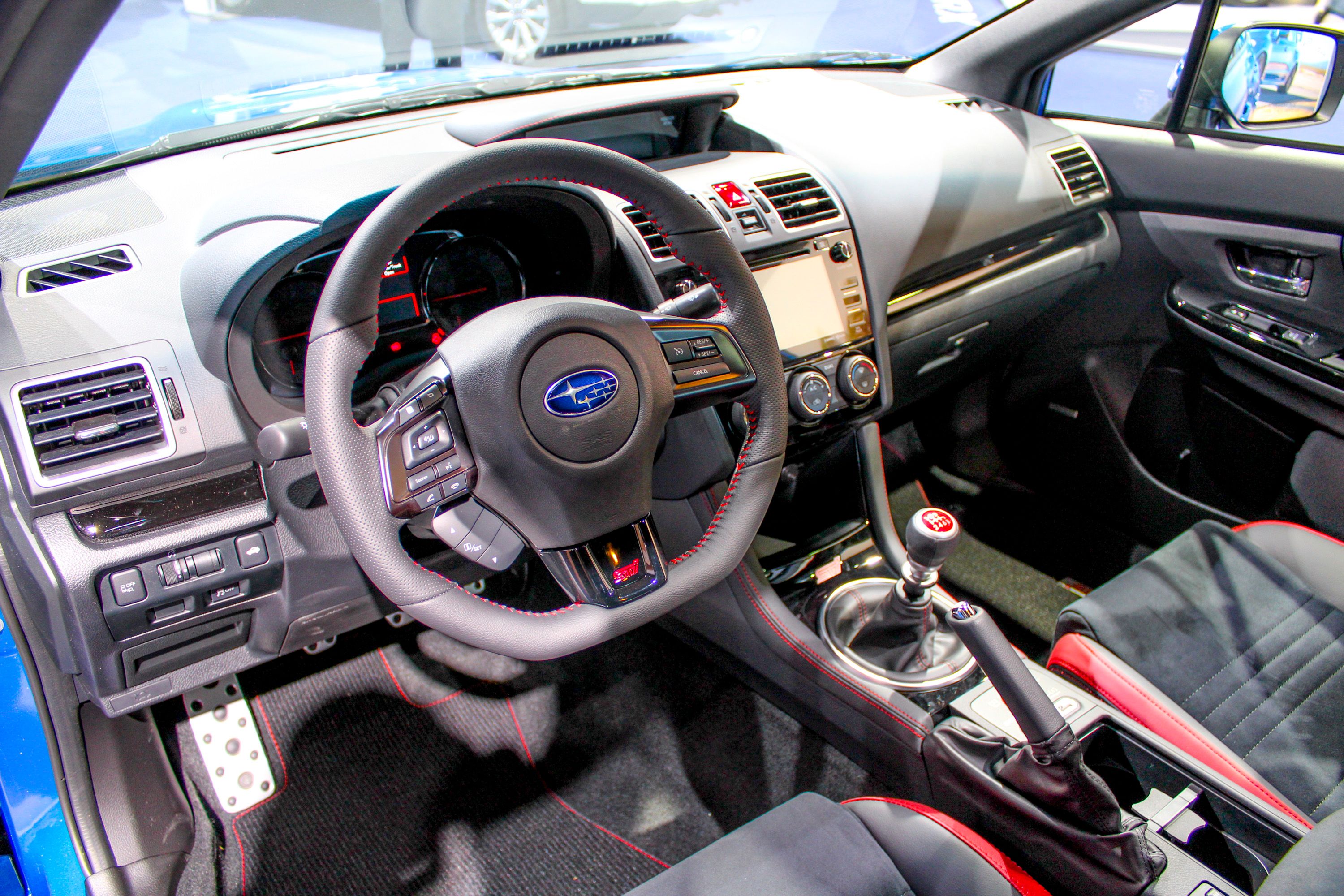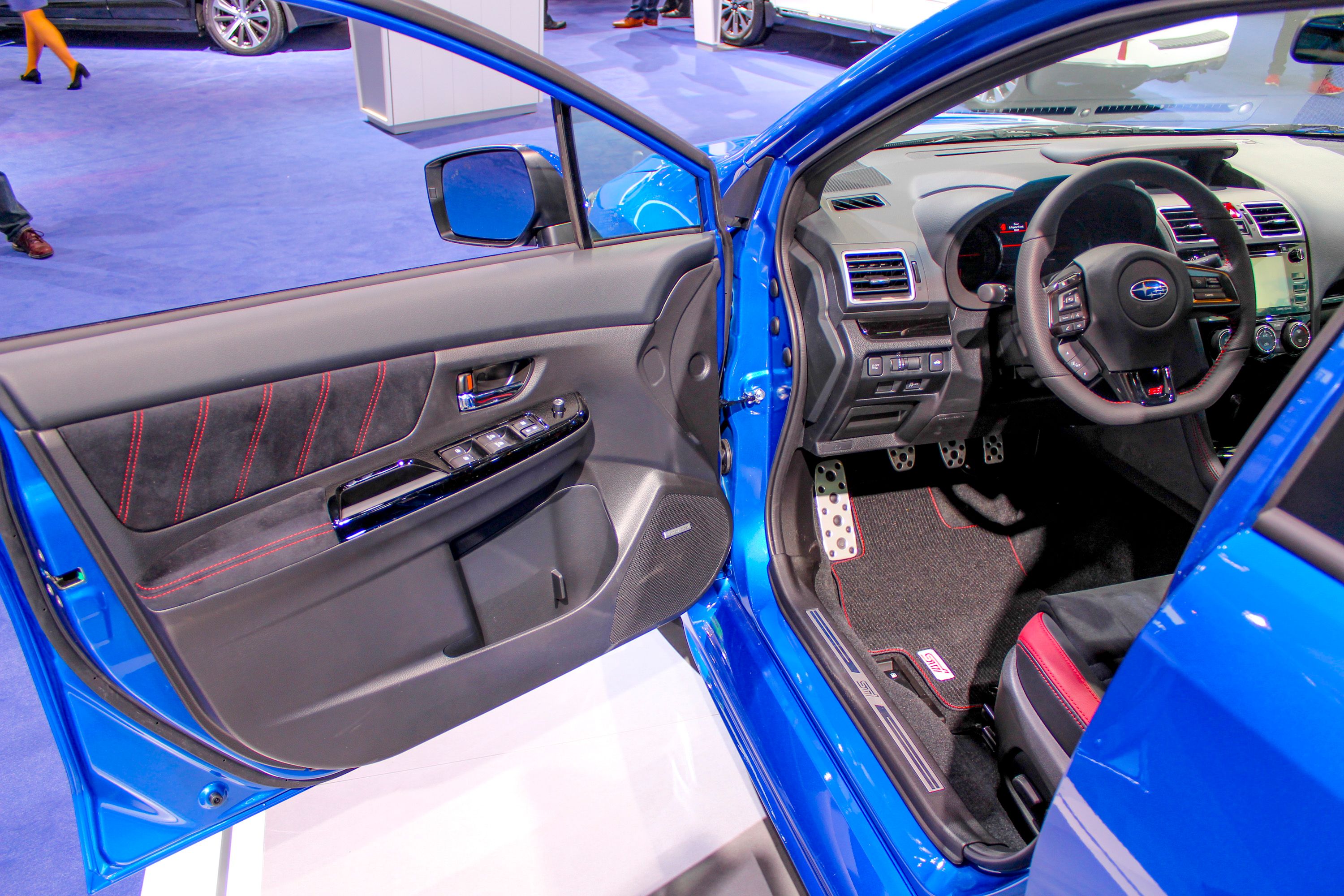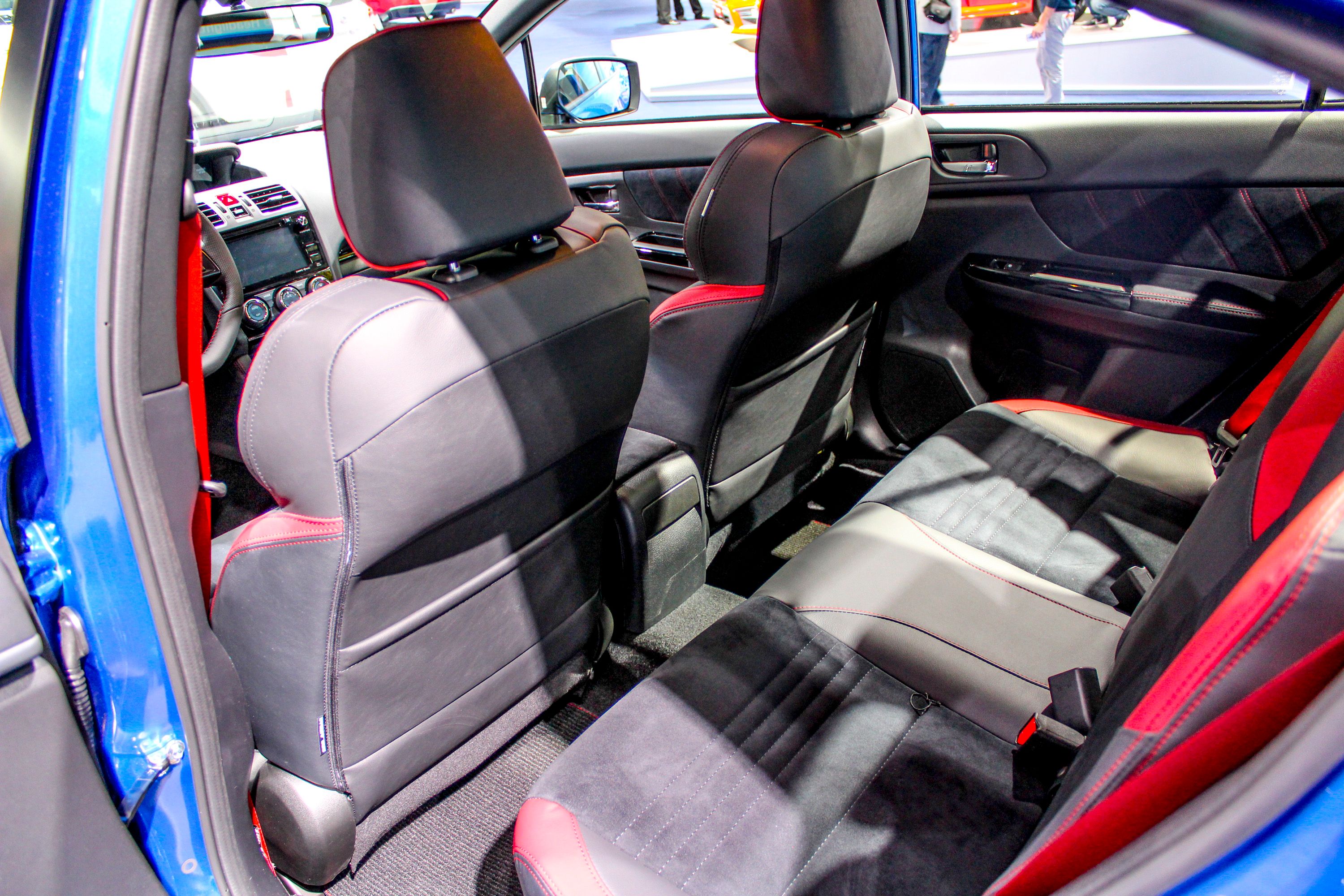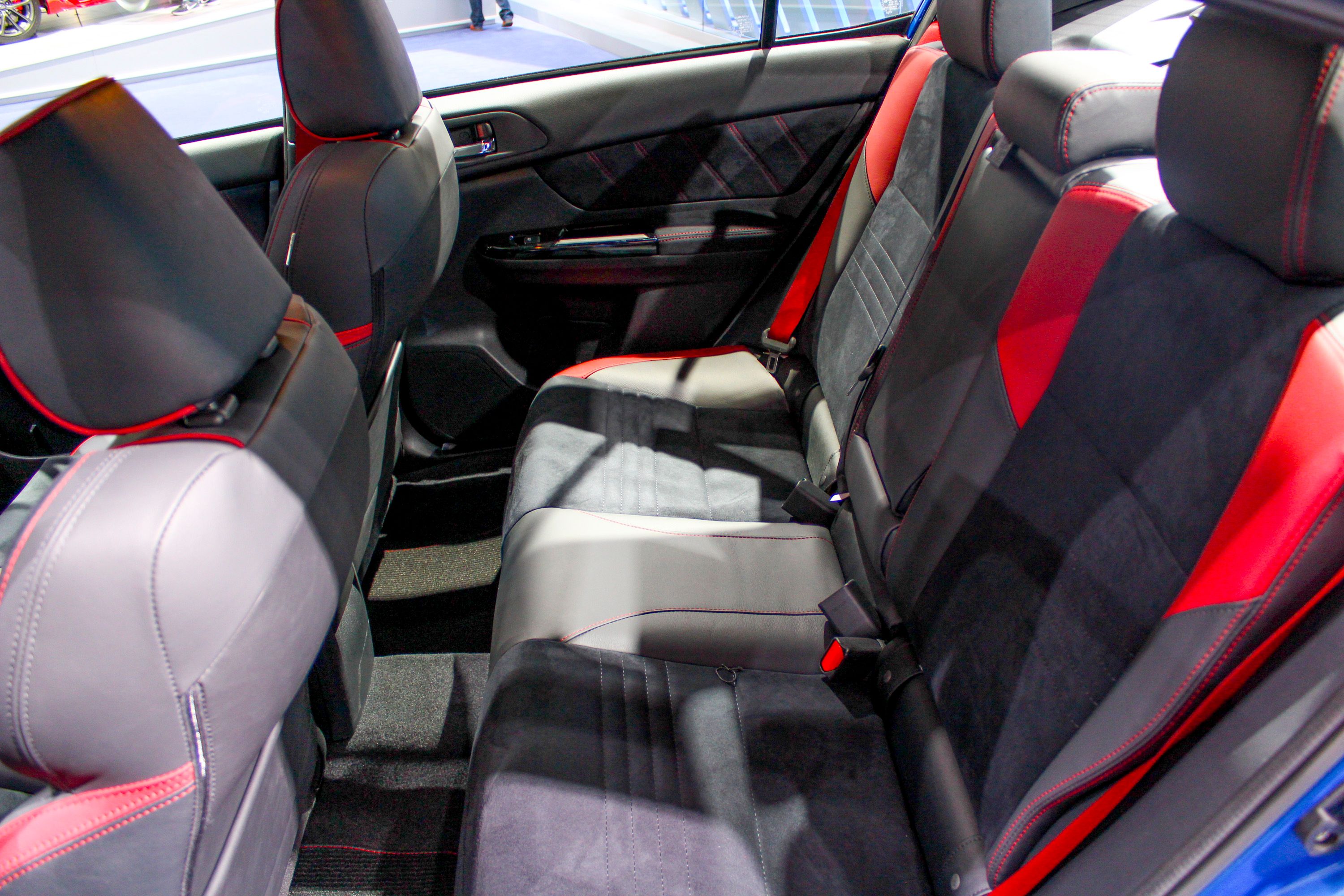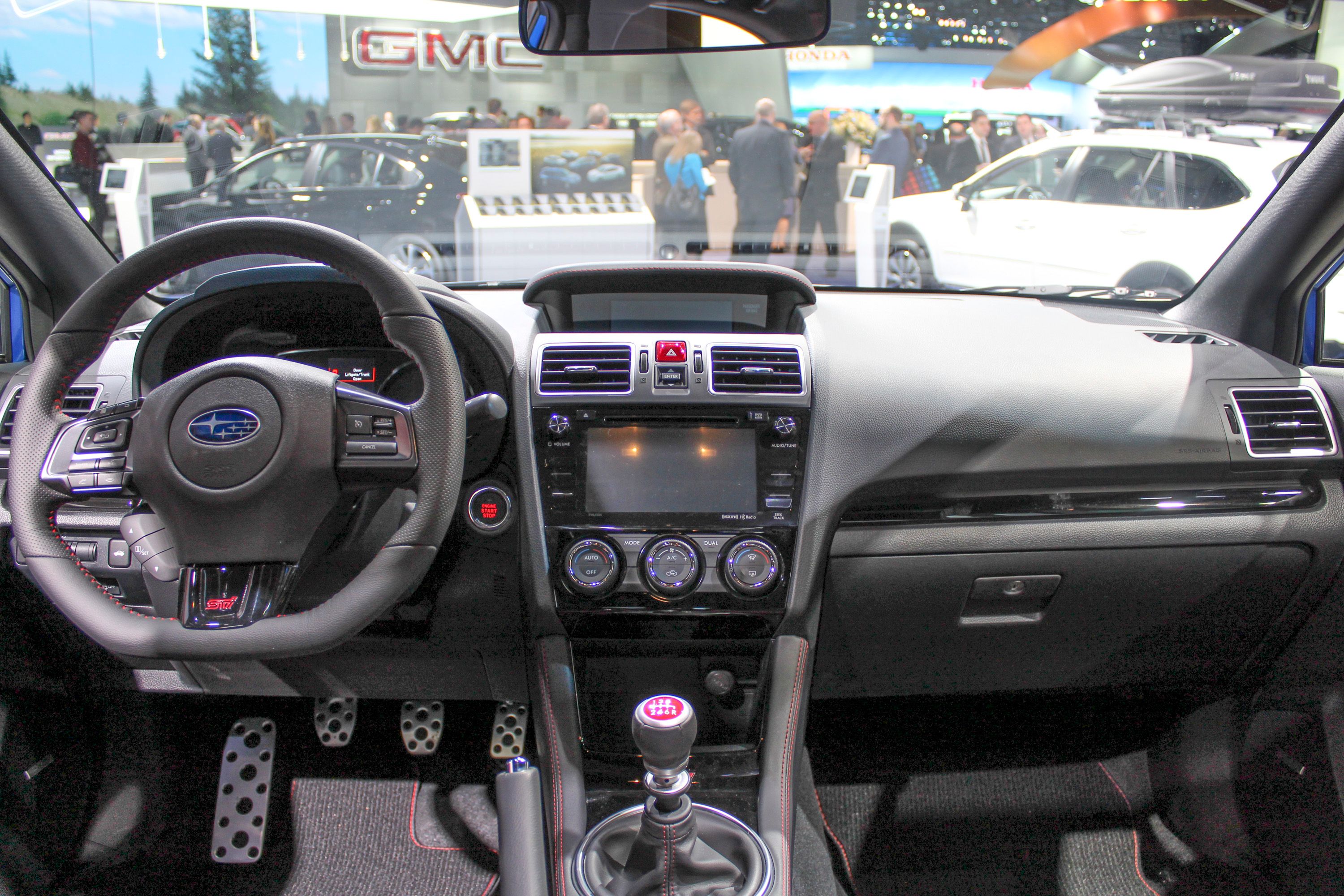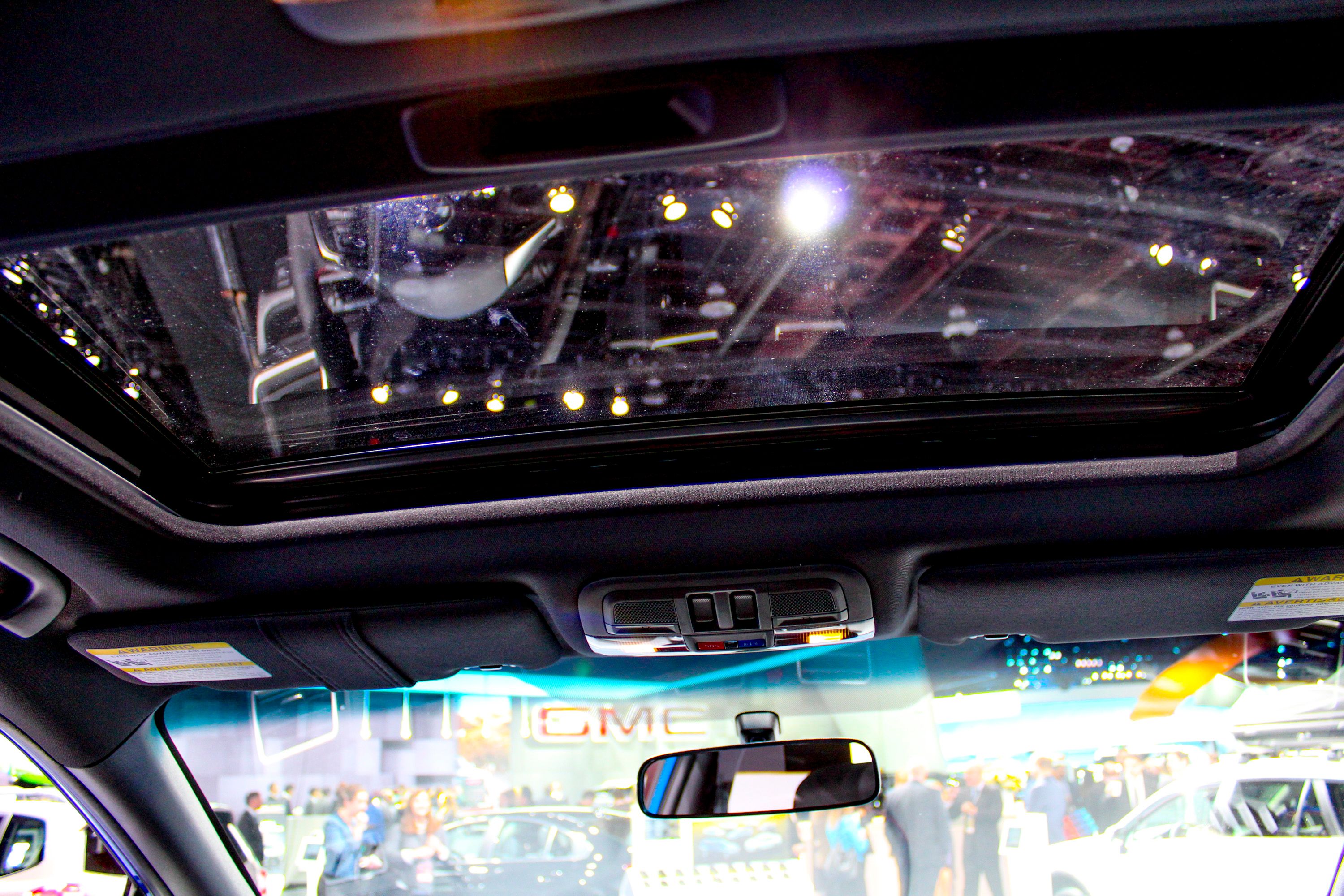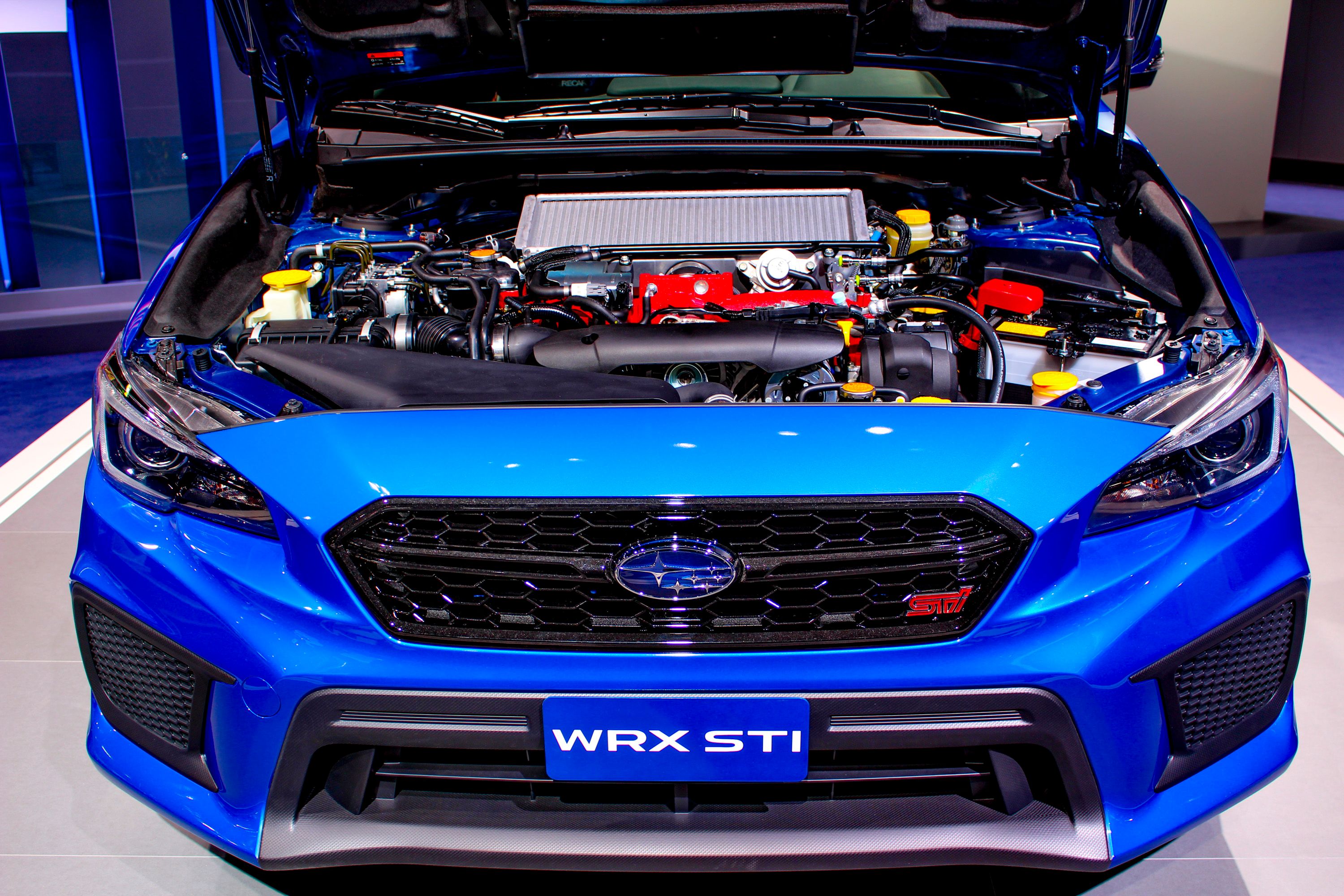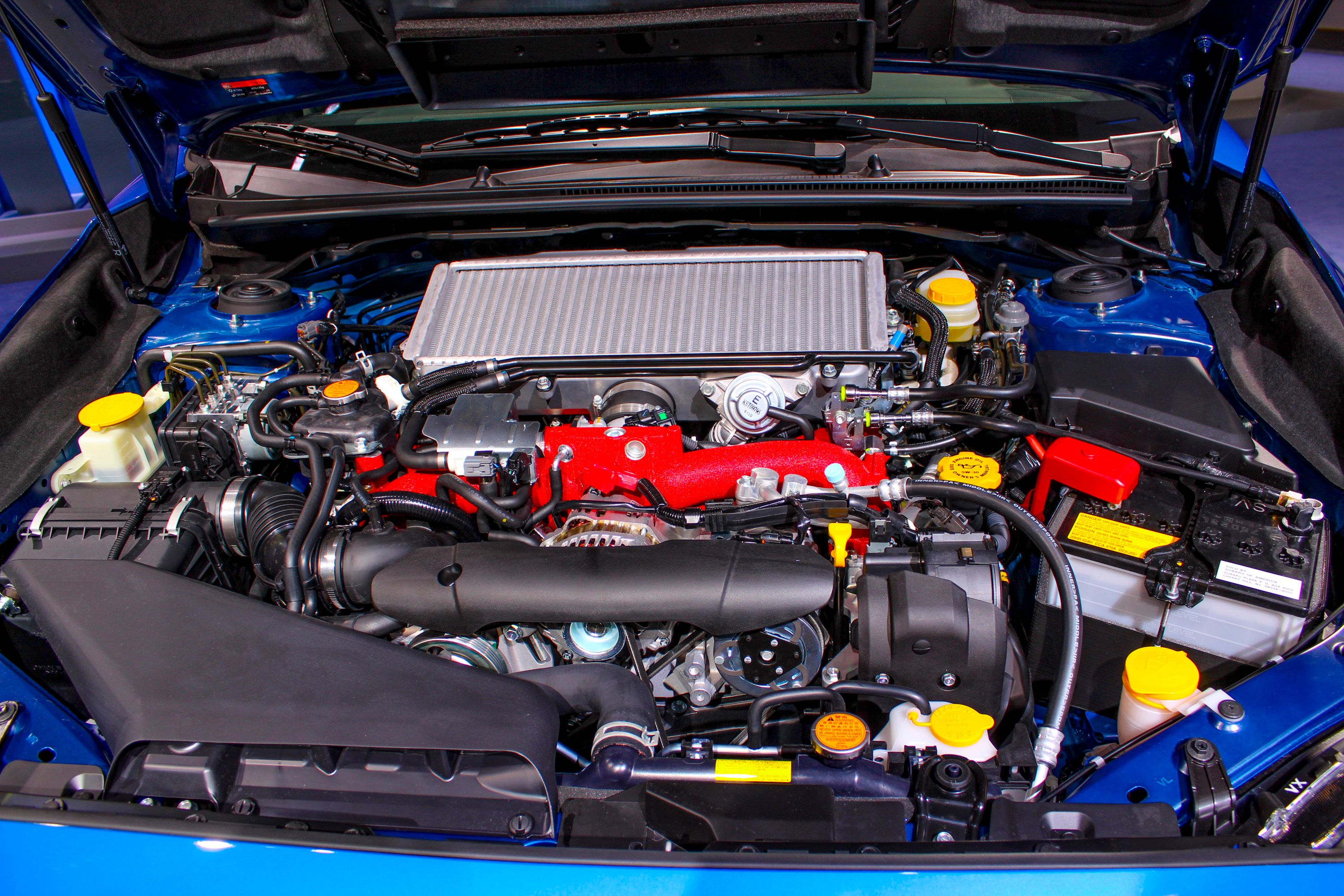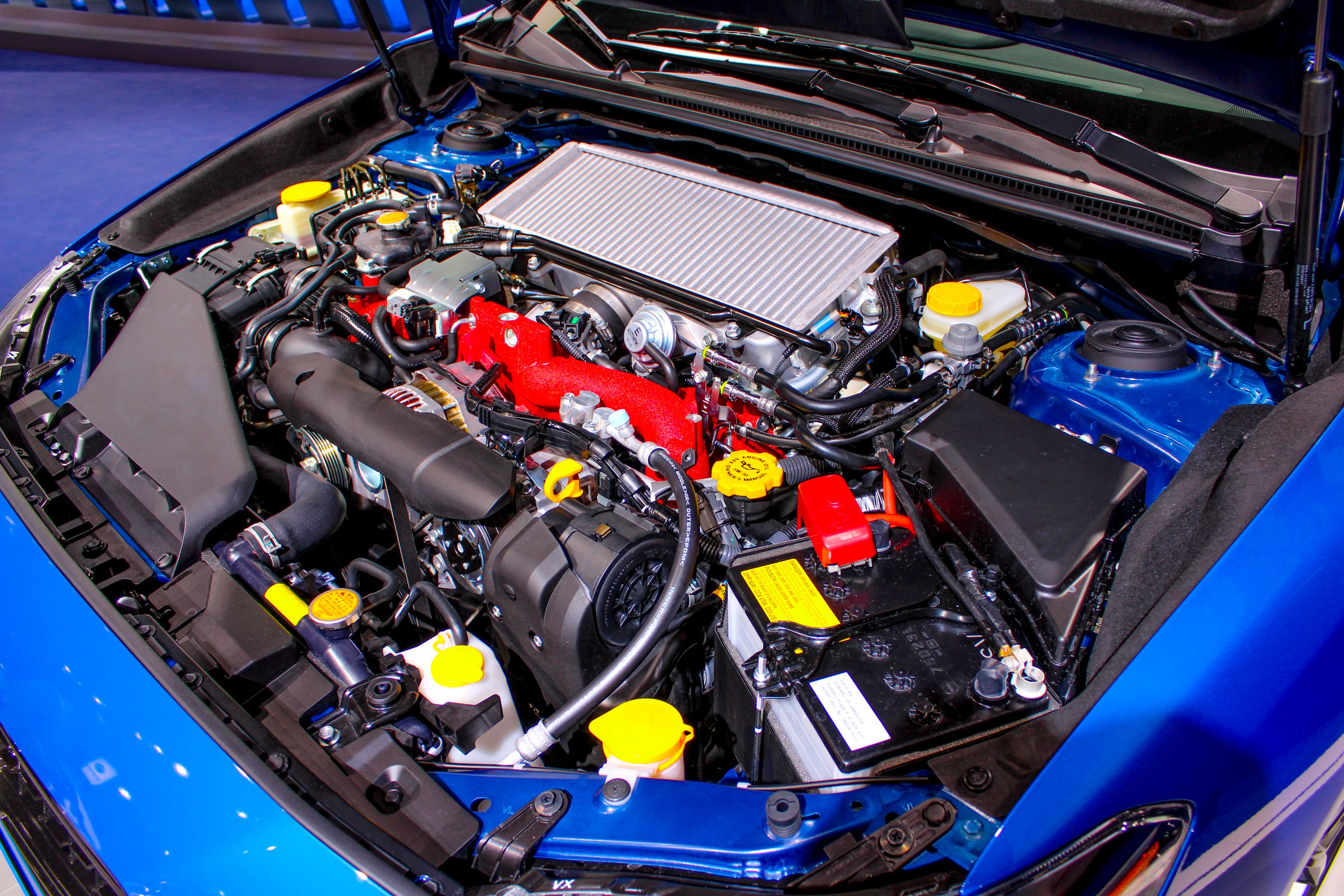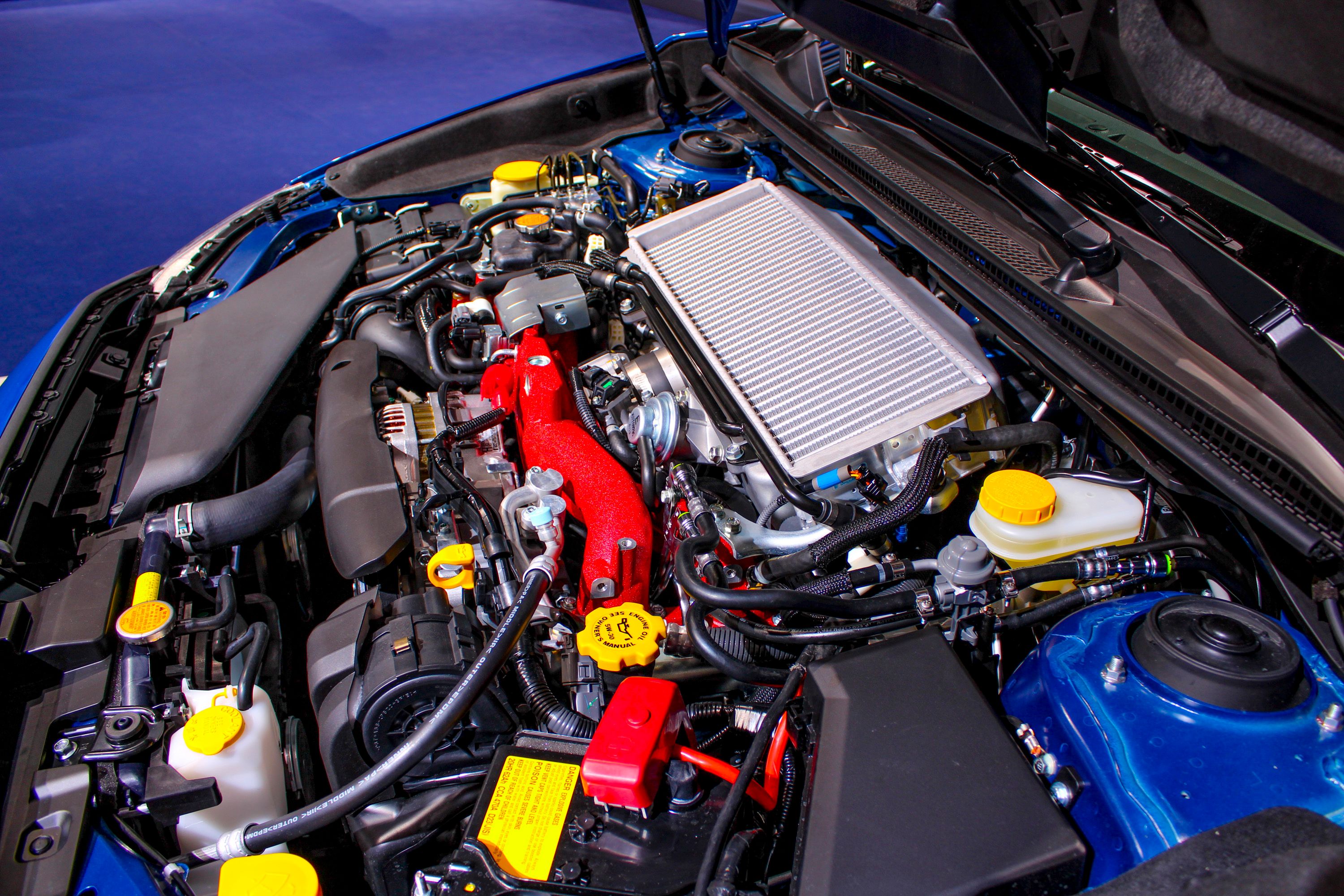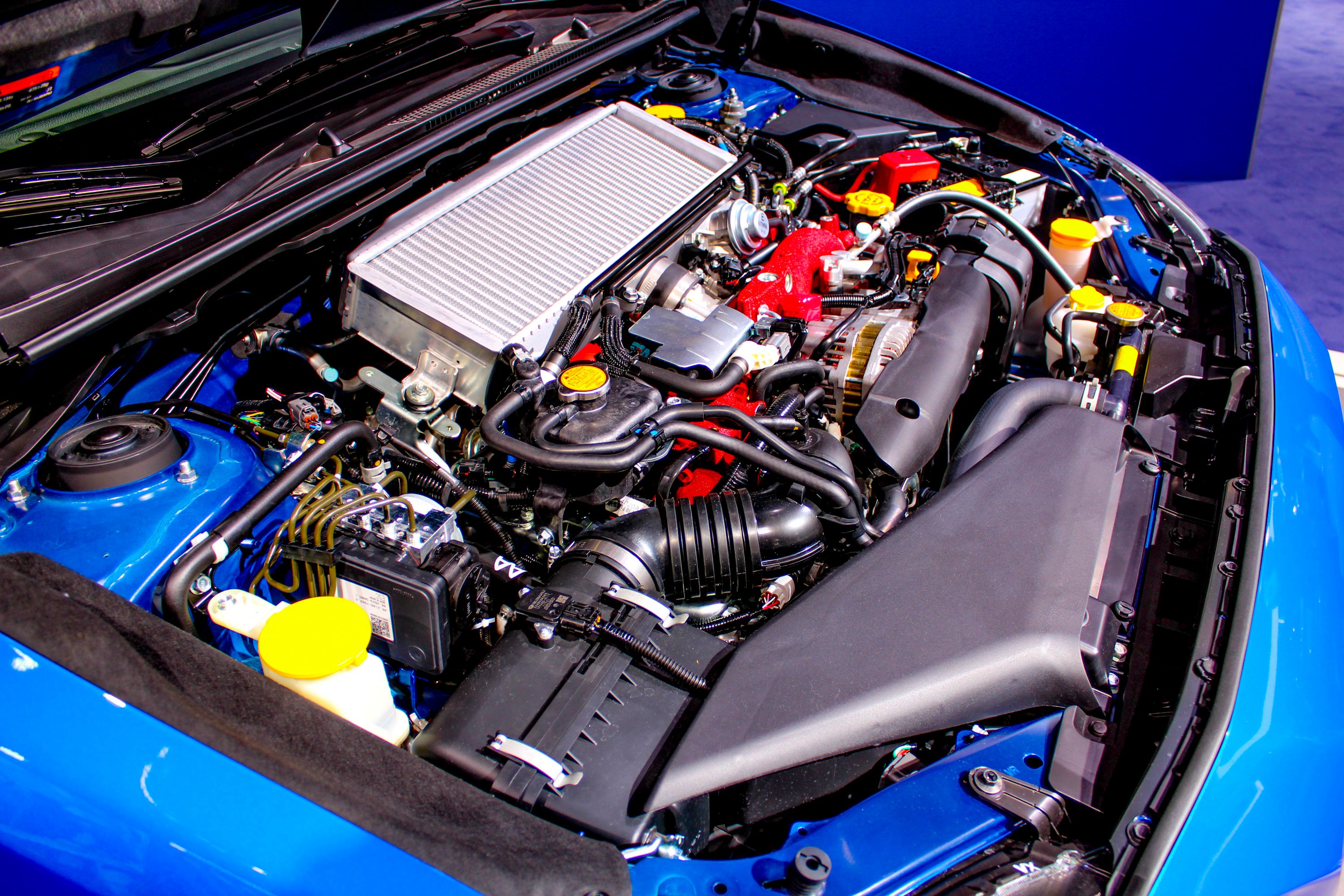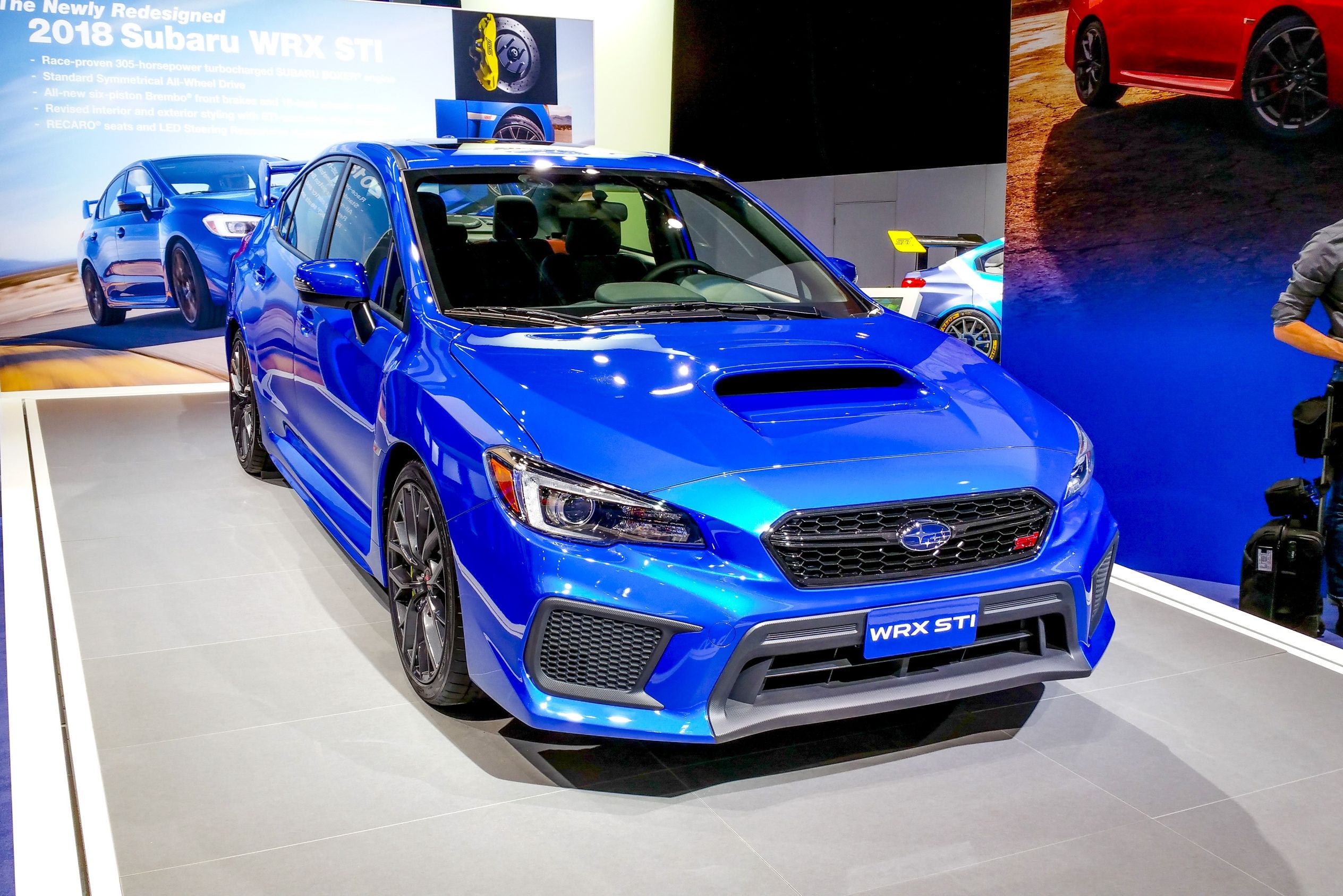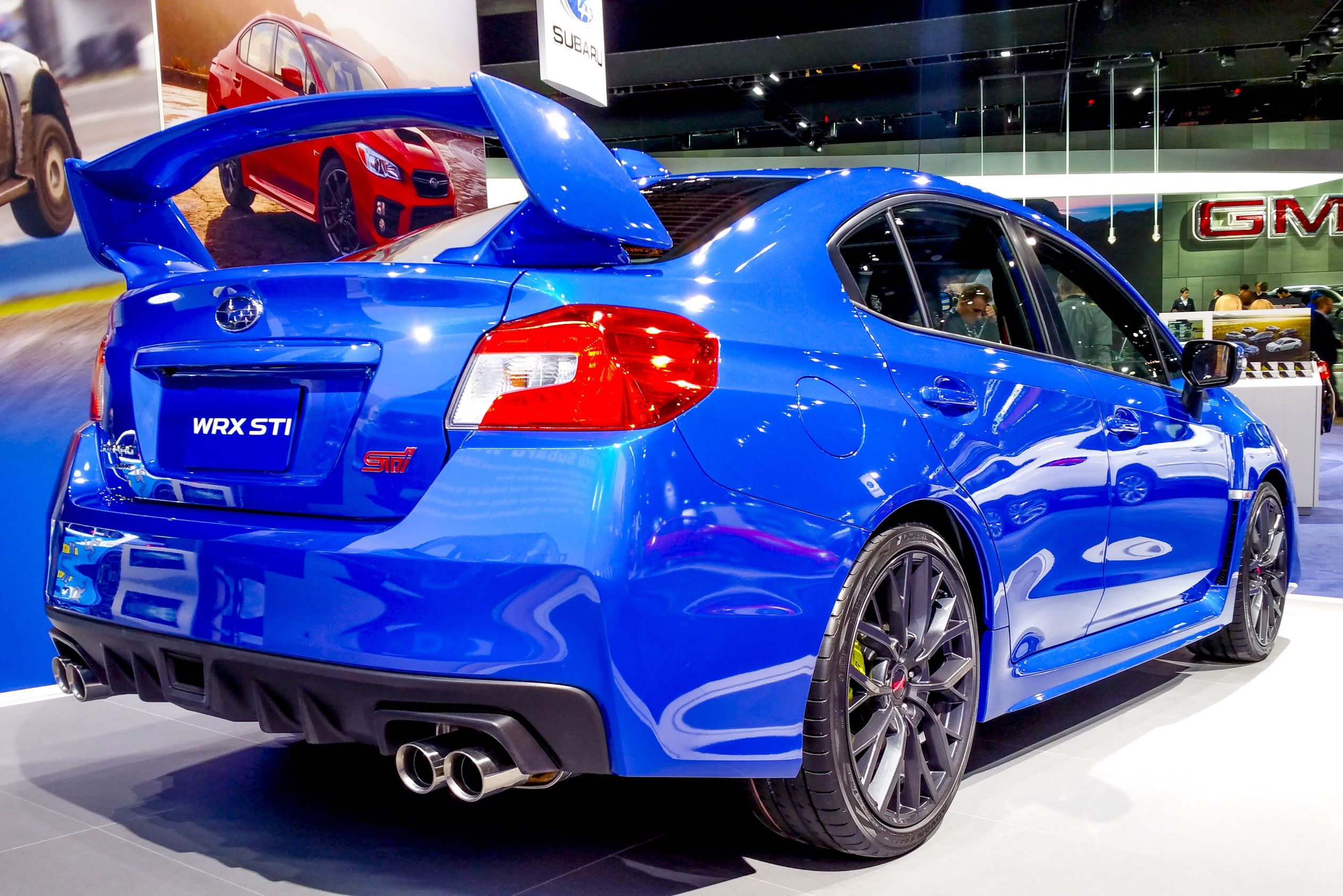Forged in the fires of competition at the World Rally Championship, the Subaru WRX first appeared in 1992 bearing all the makings of a hoon-ready enthusiast’s wet dream. Packing a turbocharged four-cylinder engine, oodles of AWD grip, and a name that alludes to its competition origins (some say it stands for “World Rally Cross,” others say it’s “World Rally Experimental”), the WRX was an immediate hit, prompting the Six Star Brand to offer up an even hotter STI variant two years later. STI is the signature of Subaru Tecnica International, Subaru’s high-performance tuning arm, which translates as more power, more aggression, and more speed, and with four generations of hot rod Suby’s now on the books, the WRX STI deserves a refresh. Enter the 2018 model year, which gets tweaked exterior styling, a quieter, more comfortable cabin, sharper handling, and better brakes.
At its core, the 2018 Subaru WRX STI is more or less identical to the outgoing model. Even though Subaru released the new fifth-generation Impreza last year at the New York international Auto Show, the WRX and WRX STI variants remain stuck in the past, with fans anxiously awaiting the inevitable evolutionary changeover from the current fourth-gen model. Nevertheless, Subaru continues to sell its rally-bred superstar in droves, so you can’t really blame the automaker for taking its sweet time.
For now, the STI enters the 2018 model year with “performance, comfort, design and safety enhancements for a more rewarding driving experience.” Read on to learn what that means, and whether or not it’s enough of an update to warrant your performance dollar.
Continue reading to learn more about the 2018 Subaru WRX STI.
2018 Subaru WRX STI
- Make: Array
- Model: 2018 Subaru WRX STI
- [do not use] Vehicle Model: Array
Model History And Background
The Subaru WRX STI is a high-performance variant of the Impreza compact car. Over the years, its been offered in three different body styles, including a four-door sedan, a five-door hatchback, and for a brief period, a two-door coupe. Two of the STI’s best-known features are its turbocharged flat-four “boxer” engine and standard AWD system.
The STI story begins in November of 1992, when Subaru introduced the Impreza WRX. The name is a reference to the World Rally Championship – the merciless, car-killing motorsport competition where the Impreza cut its teeth, and consequently, the perfect place to develop performance parts for the street.
In 1994, Subaru’s motorsports division, Subaru Tecnica International (STI), began producing an even faster WRX model, adding more power, bigger brakes, beefier transmission components, and stiffer suspension, and thus, the WRX STI was born.
Performance lovers went wild, but there was one problem – Subaru refused to bring its rally champion to the U.S. Thankfully, that all changed for the 2002 model year, when the second-generation WRX finally arrived stateside. While some griped about the lackluster interior and restyled “bug eye” front end, the critics were all silenced as soon as the Subie’s 2.0-liter turbocharged engine hit boost. Output was rated at 227 horsepower, which was enough to rocket to 60 mph in around 5.5 seconds. And with a base price of just $25,000, the WRX made for one helluva performance deal.
Two years later, U.S. customers got their hands on the STI. The frontend was restyled once again, but more importantly, there was a new 300-horsepower, 2.5-liter turbo flat-four under the gaping hood scoop.
In April of 2007, Subaru unveiled the third-generation Impreza, followed by the release of the next-gen STI in October. The delay between the fourth-gen base Impreza and fourth-gen STI was even longer, with the standard model debuting in 2011, and the STI released in 2014. Now, with the release of the fifth-generation Impreza at the 2016 New York International Auto Show, the fifth-generation STI is surely on the way. When it will arrive, however, is up for debate.
Exterior
In the past, styling hasn’t exactly been the STI’s strong suit. That said, Subaru has done quite a bit over the years to add a little aesthetic appeal to its iconic AWD sports sedan, and while it might not be “beautiful” in the traditional sense of the word, the present-day model will most certainly get you noticed.
This holds true with the 2018 model year. Compared to the outgoing model, the 2018 looks pretty much identical, rocking lots of hard angles, pumped up performance cues, and a boy racer kind of attitude.
Overall, Subaru says it gave the new model a “sportier attitude.” To accomplish this, the front end was restyled with a new upper grille, which gains a more symmetrical division along its lateral axis. The hexagonal grille also gains larger hexagonal openings, while proudly presenting a centrally mounted Subaru badge and corner-mounted pink STI badge.
The lower front intake is also bigger, offering up a gaping scowl that’s clearly not happy with any left-lane bandits it might encounter. In the corners, the side intakes are bigger, gaining a fine hexagonal mesh insert while deleting the old fog lights.
Higher towards the front fenders, we find the headlights, which were once again equipped with C-shaped LED daytime running lights that seem to draw inspiration from Subaru’s Viziv GT Vision concept car from Gran Turismo. And why not – this thing is already an icon of the video game generation, so Subaru might as well capitalize on it.
Mounted centrally on the hood is the trademark hood scoop, which bulges like the neck of a professional MMA fighter. Speaking of visual brawn, the front fenders are once again massively flared, adding substantial beefiness to the whole front end.
Viewed from the side, the STI looks much more low-key, with the roofline, shoulder line, and side skirts keeping the car’s performance potential close to the chest. But that changes as soon as you look at the huge wheels in the corners. The rollers are all new for 2018, sporting a 19-inch diameter as standard, a first for the model. The design uses a split Y-shape for the spokes, calling to mind a similar look used by wheel manufacturer BBS, while the finish is in a dark anthracite that works quite well with the traditional World Rally Blue paint job. Under the wheels, you’ll notice bright yellow calipers from Brembo, offering an indication of the car’s newfound stopping power (more on that a little later).
Finally, no STI would be complete without the addition of a behemoth rear wing, and the 2018 model year doesn’t disappoint. Because screw rear visibility – anything behind you is losing anyway, right?
For the moment, there’s no indication Subaru will reintroduce a hatchback or wagon body style anytime soon. And that’s unfortunate, but if it does happen, don’t expect it until at least the new-gen drops.
Rival Style
Note: Ford Focus RS pictured on the left, Volkswagen Golf R pictured on the right.
When it comes to rivals, the STI’s biggest competition comes from the Ford Focus RS (pictured on the left). With a history of rally success that equals even the mightiest of Subarus, the Focus RS is also equally drenched in hot compact visual cues. The front-end intakes are enormous, set at hard angles and creases, while in the corners are gigantic multi-spoke wheels. Balancing it out is a colossal rear wing mounted to the top of the hatch, completing the look of a race-ready street fighter.
Placed next to the Focus RS and WRX STI, the Volkswagen Golf R (pictured on the right) is considerably more subdued. That’s not to say it’s boring, rather, it’s just a little more “grown-up” compared to the Suby and Ford. The same basic Golf shape is recognizable, while the low stance is enhanced with large, five-spoke wheels that fill the fender gap. The front fascia looks mean, and there are quad exhaust tips in the tail. But there’s no oversized rear wing on the roof, and the lines are straight and simple. That makes this thing ideal for anyone looking for high-end compact performance without the associated “look-at-me” attitude.
Exterior Dimensions
|
Ford Focus RS |
Volkswagen Golf R |
Subaru WRX STI |
|
|
Wheelbase (Inches) |
104.3 |
103.5 |
104.3 |
|
Length (Inches) |
172.8 |
168.4 |
180.9 |
|
Width (Inches) |
71.8 |
70.8 |
70.7 |
|
Height (Inches) |
58.0 |
56.5 |
58.1 |
Interior
Like its exterior styling, the STI’s interior is more or less the same as it was before, save for a few tweaks here and there. The look and layout uses an upright center control stack with dual infotainment screens – one on top of the dash, the other in the center stack. The three-pronged steering wheel gets a flat bottom and large handgrips, plus thumb-length controls and an STI badge at the 6 o’clock position. The trim includes carbon fiber accents and aluminum surrounds, while the sporty pedals are made from brushed metal and pegged with rubber inserts. Dark upholstery abounds, offset by reddish pink contrast stitching.
The gauge cluster appears new, using white numbers and red dials, as opposed to red numbers and white dials on the old model. Between the left-mounted tachometer and right-mounted speedometer is a small driver’s information screen.
Holding the driver and front passenger in place are highly bolstered sports seats. Customers can get even more supportive Recaro units as an available option on the standard STI trim level, or opt into the STI Limited to get them as standard.
Subaru boasts the new STI doubles down on its “usability,” which is likely a major sticking point for buyers looking to combine big-time performance with daily driveability, AWD grip, and practicality for activities in the great outdoors. After all, the STI is still a four-door sedan, not a two-door coupe like the BRZ.
As such, Subaru has equipped all STI trim levels with new high-grade materials, while the rear bench also gets a new armrest outfitted with cup holders. Further small changes include redesigned door grips, and a faster-opening remote trunk feature.
The more noticeable upgrade will be a reduction in wind and road noise thanks to improved door sealing, a foam-filled windshield header beam, and thicker door glass. All that stuff will likely make for a much more comfortable ride when taking long trips, such as up to the mountains for a snow-filled weekend.
Last but not least is the new new central multifunction infotainment screen, which offers nearly 6 inches of HD color resolution. This unit is a substantial increase compared to the outgoing 4.3-inch unit, and although you’d be crazy to get an STI for its infotainment system, it’s still definitely a welcome addition.
The question is this though – does the new gear and sound insulation affect the car’s curb weight or handling in any meaningful way? Does the extra comfort diminish the STI’s inherent rawness? Basically, would it better if it were worse? We’ll let you know once we get our hands on one.
Rival Cabins
Note: Ford Focus RS cabin pictured on the left, Volkswagen Golf R cabin pictured on the right.
As previously stated, you’d have to be a bit loony to get a performance compact car for the interior. That said, odds are you’ll have to be doing a bit of the A-to-B thing eventually, so it doesn’t hurt to take the cabin into consideration when weighing the various pros and cons.
First up, the Focus. Clearly, the Blue Oval was more concerned with going fast when it came time to design this thing, and as a result, the interior has a definite “rental” vibe to it. Cheap, hard plastics seem to pervade throughout, while the layout looks like it was plucked from a model from 2005. Still, the cabin does come with a few features that make it worthy of the RS badge. For starters, the steering wheel looks chunky and grippy, just how you’d want it, while high on the dash is a trio of gauges to keep tabs on the oil temp, boost pressure, and oil pressure. In the center stack you’ll find a decently sized infotainment screen with Ford’s Sync system.
Unsurprisingly, the VW is the one to get if you want to be comfortable. Like its exterior styling, the Golf R’s interior is a bit more low-key, combining solid fit and finish with a layout that seems a cut above the rest. You also get a flat-bottom steering wheel and bolstered sport seats, but both are wrapped in leather and don’t feel like they were designed for use during recess. It would be nice if the infotainment screen was a little bigger, but you still get nice features like app support, SiriusXM radio, and premium audio.
Interior Dimensions
|
Ford Focus RS |
Volkswagen Golf R |
Subaru WRX STI |
|||
|
Ford Focus RS |
Volkswagen Golf R |
Subaru WRX STI |
39.1/37.9 |
38.4/38.1 |
39.8/37.1 |
|
Headroom front/rear (Inches) |
41.9/33.4 |
41.2/35.6 |
44.3/35.4 |
||
|
Legroom front/rear (Inches) |
55.6/52.6 |
55.9/ |
55.6/54.2 |
||
|
Shoulder Room front/rear (Inches) |
20.0 |
22.8 |
12.0 |
||
|
Cargo Volume (cu. ft.) |
91.0 |
93.5 |
96.6 |
Drivetrain
Just like the base model WRX, the STI marches into 2018 carrying the same engine as its predecessor. That means you get an all-aluminum, 16-valve, 2.5-liter flat four-cylinder “boxer” powerplant with double overhead cams and port fuel injection. The engine is turbocharged and intercooled (thanks hood scoop!) and produces upwards of 305 horsepower at 6,000 rpm and 290 pound-feet of torque at 4,000 rpm.
Simply put, this configuration has been around for a very long time, with the current model’s under-hood equipment more or less mirroring what Subaru was offering over 12 years ago. Back then, 300 horsepower was a lot. These days… well, let’s just say when you can buy 700 horsepower for $60,000, your base line shifts a little bit.
Still, when properly applied, the STI does feel pretty quick. A run from standstill to 60 mph is accomplished in the high-to-mid-four-second range, with the quarter mile completed in the low-13’s. Top speed is around 160 mph, even with the brick-like aero and that rear wing standing tall.
If you’re a fan of rowing your own, then you’re in luck, because the STI’s only transmission choice is a six-speed manual.
Translating the go into traction is Subaru’s tried-and-true Symmetrical All-Wheel Drive (SAWD) system. First making its debut in the early ‘70s, SAWD is known for providing high levels of grip while maintaining optimal weight distribution, enhancing handling in the process.
For 2018, Subaru modified the STI’s driver-controlled center differential (DCCD). While previously the DCCD used both mechanical and electronic control, the new model utilizes electronic control only for “quicker and smoother response.”
In case you were unaware, the DCCD system varies the torque ratio between the front and rear axle, controlling the differential lock up. The STI offers the option to tune this yourself, or leave it in automatic settings, which is great if you wanna tweak your drivetrain to optimize for events like an autocross, rally cross, road course, and the like.
The integrated SI-Drive system still gets three settings – “Sport,” which is good for everyday enthusiastic driving, “Sport Sharp,” which is maximum balls-to-the-wall response, and “Intelligent,” which is useful for city slow-and-go and low-traction surfaces.
Rival Drivetrains
Note: Ford Focus RS pictured on the left, Volkswagen Golf R pictured on the right.
Mounted behind that blunt nose of the Ford Focus RS is an all-aluminum, 16-valve, 2.3-liter inline four-cylinder engine with direct fuel injection. Thanks to lots of turbo pressure and an intercooler, the Focus RS produces 350 horsepower at 6,000 rpm and 350 pound-feet of torque at 3,200 rpm. Like the Suby, the Ford utilizes a six-speed manual transmission for cog swaps.
That’s substantially more peak output than the STI, but interestingly, the Ford isn’t Note: Ford Focus RS pictured on the left, Volkswagen Golf R pictured on the right. much faster. Most comparisons put the Ford ahead in acceleration, but only by a tenth or two in the 0-to-60 mph sprint. Top speed is also just ahead of the Subaru, besting the STI by about 5 mph.
By comparison, the Golf R lags a bit in the performance department. Making it go is a 16-valve inline four-cylinder engine with an iron block and aluminum head, plus direct fuel injection. With the turbo spinning, it’ll make 292 horsepower at 5,400 rpm and 280 pound-feet of torque at 1,800 rpm.
And while it’s only down 12 horsepower compared to the STI, the 0-to-60 mph sprint takes a significantly longer time, up to 5.3 seconds when it’s all said and done. But the biggest difference for the Golf R is in the transmission options. While the RS and STI are both equipped with three pedals, the Golf R is offered with an optional dual-clutch automatic, and that could be the big selling point for anyone who doesn’t wanna bother with a clutch pedal. Of course, a six-speed manual is also on the table.
|
that} |
|||||
|
Ford Focus RS |
Volkswagen Golf R |
Subaru WRX STI |
2.3-liter EcoBoost engine |
2.0L inline four cylinder |
2.5-liter flat four-cylinder “boxer” |
|
Engine |
350 HP @ 6,000 RPM |
292 HP @ 5,400 RPM |
305 HP @ 6,000 RPM |
||
|
Horsepower |
350 LB-FT @ 3,200 RPM |
280 Lb-FT @ 1,800 RPM |
290 LB-FT @ 4,000 RPM |
||
|
Torque |
4.7 seconds |
5.3 seconds |
4.6 seconds |
||
|
0 to 60 mph |
165 mph |
155 mph |
160 mph |
||
|
Top Speed |
6-speed manual |
6-speed manual |
6-speed manual |
||
|
Transmission |
19/25 |
22/31 |
17/23 |
||
|
Fuel economy city/highway |
3,459 Lbs |
3,282 Lbs |
3,391 Lbs |
Chassis And Handling
If you’re an enthusiast, then the big news you’ll wanna see is in this section. To help it handle and ride more comfortably, the STI received new suspension tuning, somewhat similar to what was done on the base model WRX. Subaru didn’t explain how it managed this trick, but sharper handling without breaking your back is most definitely a welcome upgrade.
As a reminder, the STI uses four-wheel independent suspension, employing double wishbones in the rear and aluminum front lower control arms. Body roll is reduced thanks to pillow-ball mounts and bushings, and the steering ratio is set at decently quick 13:1.
Wrapping the larger 19-inch wheels are tires sized at 245/35R19. The thinner sidewall should help sharpen handling, which pairs nicely with all that extra grip (the last STi could pull almost 1 g on the skid pad).
Even more cornering prowess comes by way of Active Torque Vectoring technology, plus there’s Multi-Mode Vehicle Dynamics Control if you like fiddling with the electronics.
This time around, the STI gets substantially improved brakes, with a new Performance Brake system from Brembo. The upgrades include “stronger” monoblock calipers, with six-pots in front and two-pots in the rear. The rotors are also bigger (Subaru didn’t divulge how much bigger), using drilled surfaces to reduce brake fade when pushing hard. Making the friction are new brake pads that clamp down with a larger surface area and better feel.
Rival Handling
There’s really only two words you gotta know about the RS when it comes to handling – “Drift Mode.” While similar in function to Subaru’s DCCD, Drift Mode on the RS takes it to an extreme, sending the majority of available torque to the outside rear wheel to help you go full-on Gymkhana when needed. This is accomplished using a twin-clutch AWD system, and truly transforms the RS when properly set up. Also of note is an available tire and wheel package that adds 19-inch rollers and super-sticky Michelin rubber, upping lateral grip to well over 1 G.
By comparison, the Golf R is a bit saner. The AWD system is a carryover from Audi, and the handling has been described as mostly neutral with overtones of understeer. Only 50 percent of available torque can be sent rearwards, which fits the theme of maturity quite well. Still, if you’re looking for the best-handling Golf R you can get, make sure to grab the optional 19-inch wheels for a little sharper response.
Safety And Convenience
All STI models now get LED Steering Responsive Headlights, which helps angle the headlight beams around corners for better nighttime visibility. Further safety was added with a revised front structure to offers better frontal collision protection.
These improvements are on top of a vehicle that’s already pretty darn safe. While the Insurance Insitute for highway Safety has yet to rate the 2018 STI, it has posted a review for the 2017 WRX, giving it its Top Safety Pick designation with “Good” ratings in every one of its crashworthiness categories. Not bad for a 300-horsepower rally fighter. Check it out here.
On the convenience front (or perhaps practicality would be a better word), all STI’s also come with new roof rack mounting brackets.
Prices
Look for the 2018 Subaru WRX STI to hit dealerships this spring. Pricing will likely remain the same, starting at roughly $36,000.
|
Model/Trim |
Transmission |
Applicable Option Code |
MSRP |
MSRP + destination and delivery |
|
Standard WRX STI |
6MT |
’02 ‘03 |
$36,095 |
$36,955 |
|
WRX STI Limited- Wing |
6MT |
21 |
$40,895 |
$41,755 |
|
WRX STI- Low Profile Trunk Spoiler |
6MT |
21 |
$40,895 |
$41,755 |
|
Ford Focus RS |
$36,605 |
|
Volkswagen Golf R |
$39,375 |
|
Subaru WRX STI |
$36,095 |
The Competition
Mini Cooper Hardtop John Cooper Works
Sure, the STI has its own thing going on in the styling department, but it doesn’t quite bring the charm like a Mini. But be careful – it might be cute, but properly equipped, a Mini can still offer a bit of an adrenaline rush. Take the three-door JCW edition, which comes packing with a 2.0-liter four-cylinder engine, 228 horsepower, and kart-like suspension tuning.
Read the full review here.
Ford Fusion V6 Sport
This one’s a little more understated next to the STI, but it’s still got the goods. Under the hood is a twin-turbo V-6, which spins to the tune of 325 horsepower and 380 pound-feet of torque. Throw on the optional AWD, and you’re looking at 60 mph in the low-five-second range. That’s pretty quick, but the Fusion is also comfortable, and it’s got loads of room on the rear bench.
Read the full review here.
Conclusion
So, where did we end up?
Well, the STI is now easier to drive, with a quieter cabin and more refined ride. And that’s kinda weird. When the WRX first came stateside, it was geared towards individuals excited about pouring money into the drivetrain and engine – styling and comfort were either far down the list of priorities, or not even considered at all.
But these days, with the Focus RS and Golf R roaming our streets (not to mention the inevitable arrival of the Civic Type R), sport compact performance needs more than thrust and grip.
Then there’s the price tag. At just under $40,000 for an optioned STI, Subaru is asking a lot. That makes comfort and road noise and display sizes and all that other stuff that was tossed by the wayside a decade ago quite important.
So the question is this – is the extra comfort and equipment worth the extra outlay? Or rather, should Subaru have focused on the WRX’s strengths, like speed and power, rather than bolster its weaknesses?
I think what we really need here is an honest generational changeover. As an enthusiast, if I had my way, I’d toss the thicker glass and the infotainment upgrades and focus only on performance. Start with a new turbocharged flat-four engine, add power, then tweak the drivetrain and suspension to make it a superstar on the pavement and off it.
Basically, return to the roots. For me, the WRX STI is about packing your friends into the backseat, hitting a dirt road sideways, then unloading the bike racks and going for a ride. That’s where it needs to return.
As for the rest of it – keep the larger screen for the SUVs.


